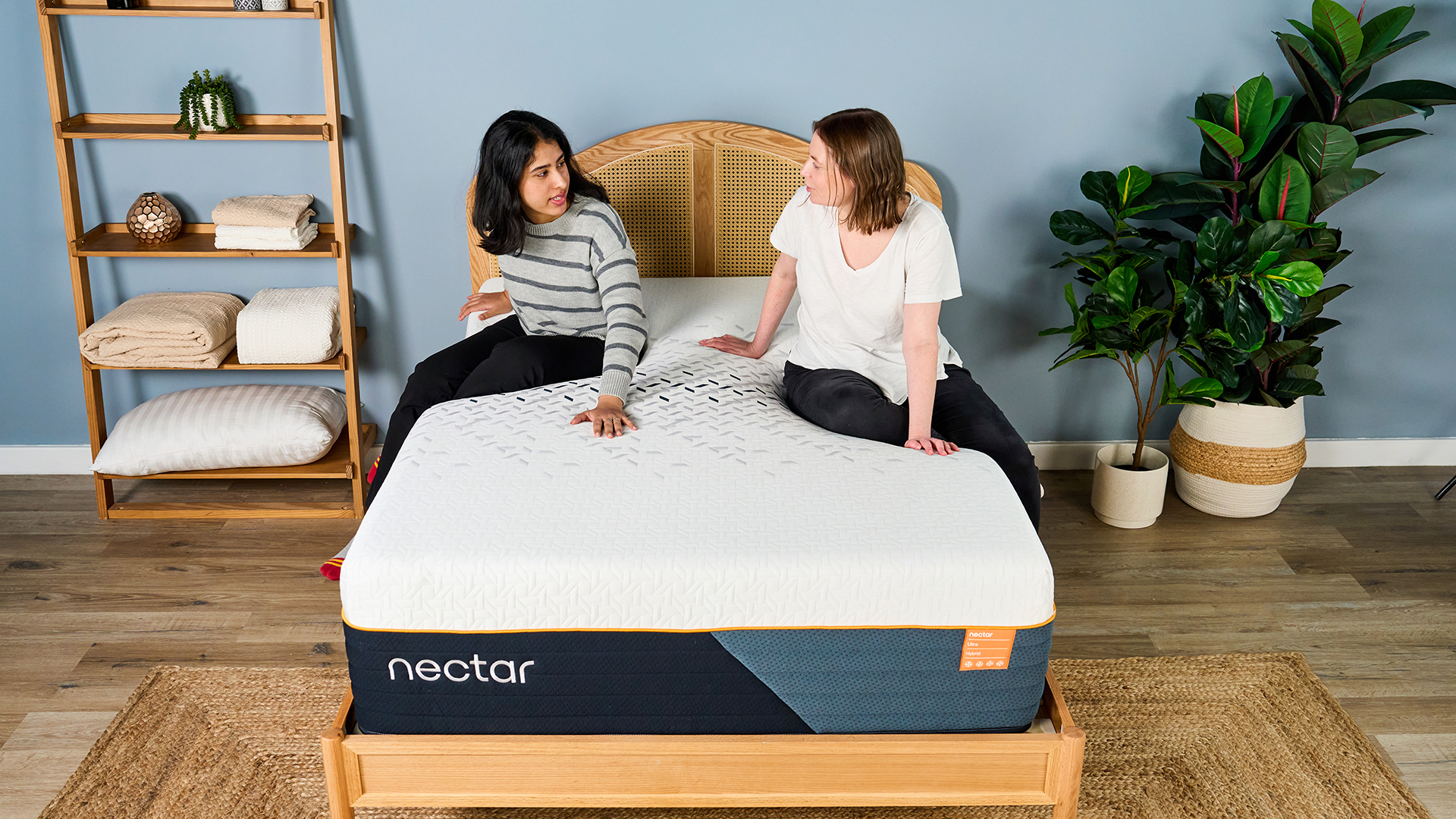The best running sunglasses 2025 according to our testing
Top-class running sunglasses for all kinds of runners
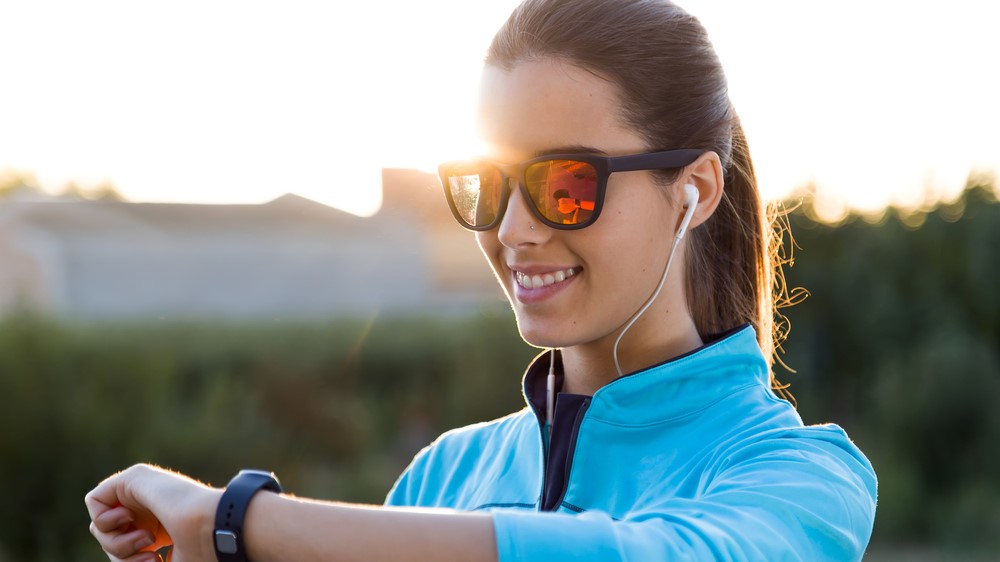
A great pair of running sunglasses does more than shield your eyes from the sun. The right pair enhances visibility, reduces glare, and stays secure no matter how fast or sweaty you get. But with so many brands and styles to choose from, finding the best fit for your needs can feel overwhelming. That’s where we come in.
As a team of runners, from casual joggers to seasoned marathoners, across different climates and conditions, we’ve put dozens and dozens of running sunglasses to the test. We’ve taken them through bright, cloudless days, overcast training runs, and even unpredictable weather to see how they truly perform. We consider crucial features like UV protection, prescription options, fit, comfort, lens quality, anti-fog performance, and stability over long distances.
Before investing in a proper pair, I didn’t think I needed running sunglasses, especially in the UK, where grey skies often dominate. But after experiencing sharper visibility, reduced eye strain, and all-day comfort, I will always grab a pair before heading out on the roads or trails.
Whether you’re after a budget-friendly option, a sleek everyday pair, or high-performance specs built for racing, we’ve got recommendations to suit every runner. Here are our top-tested picks.
The quick list
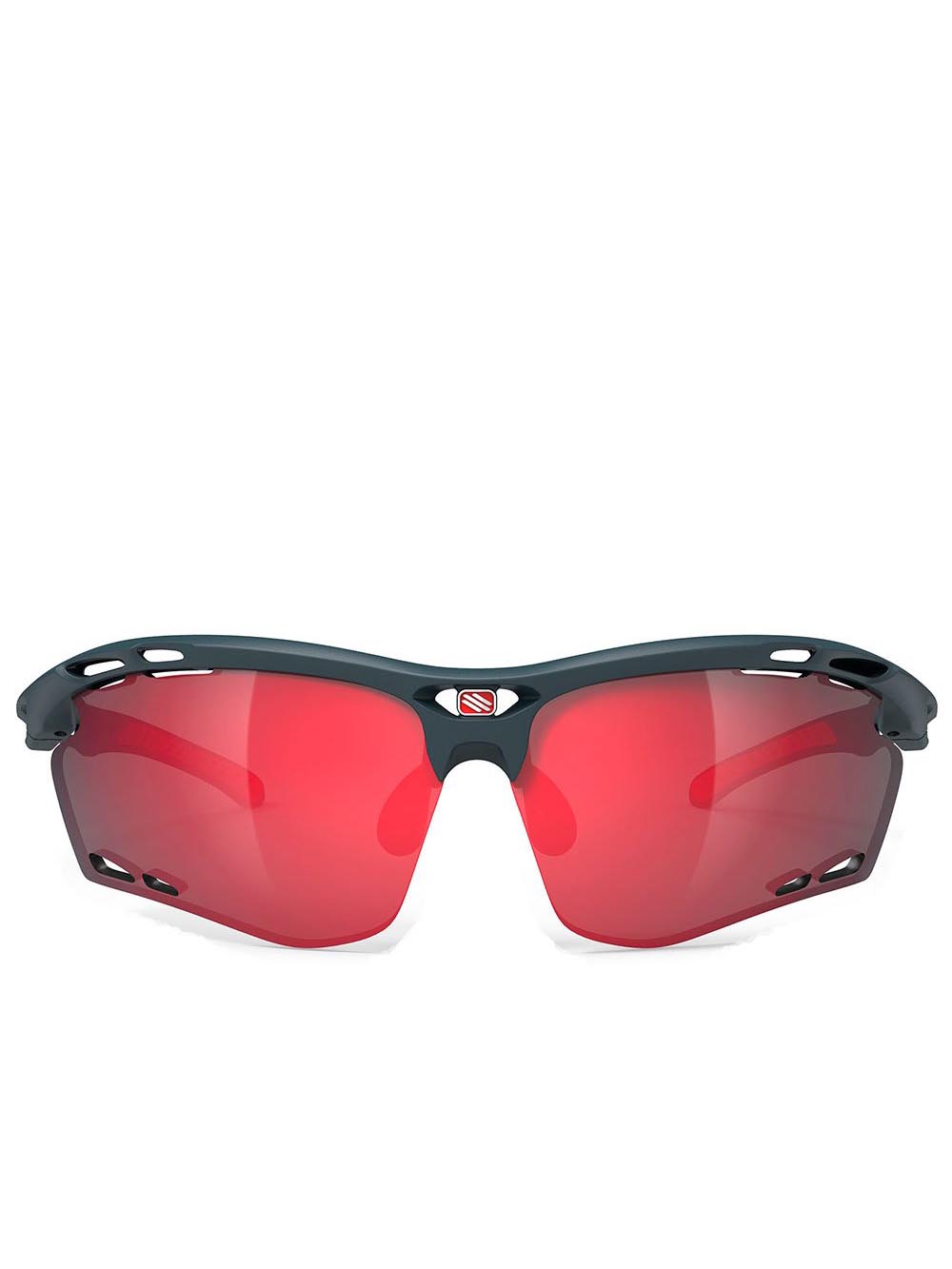
Best overall
The Rudy Project Propulse is the best overall running sunglasses because it offers a lightweight yet durable design, a secure fit, and an effective ventilation system that reduces fogging while maintaining excellent sun protection.
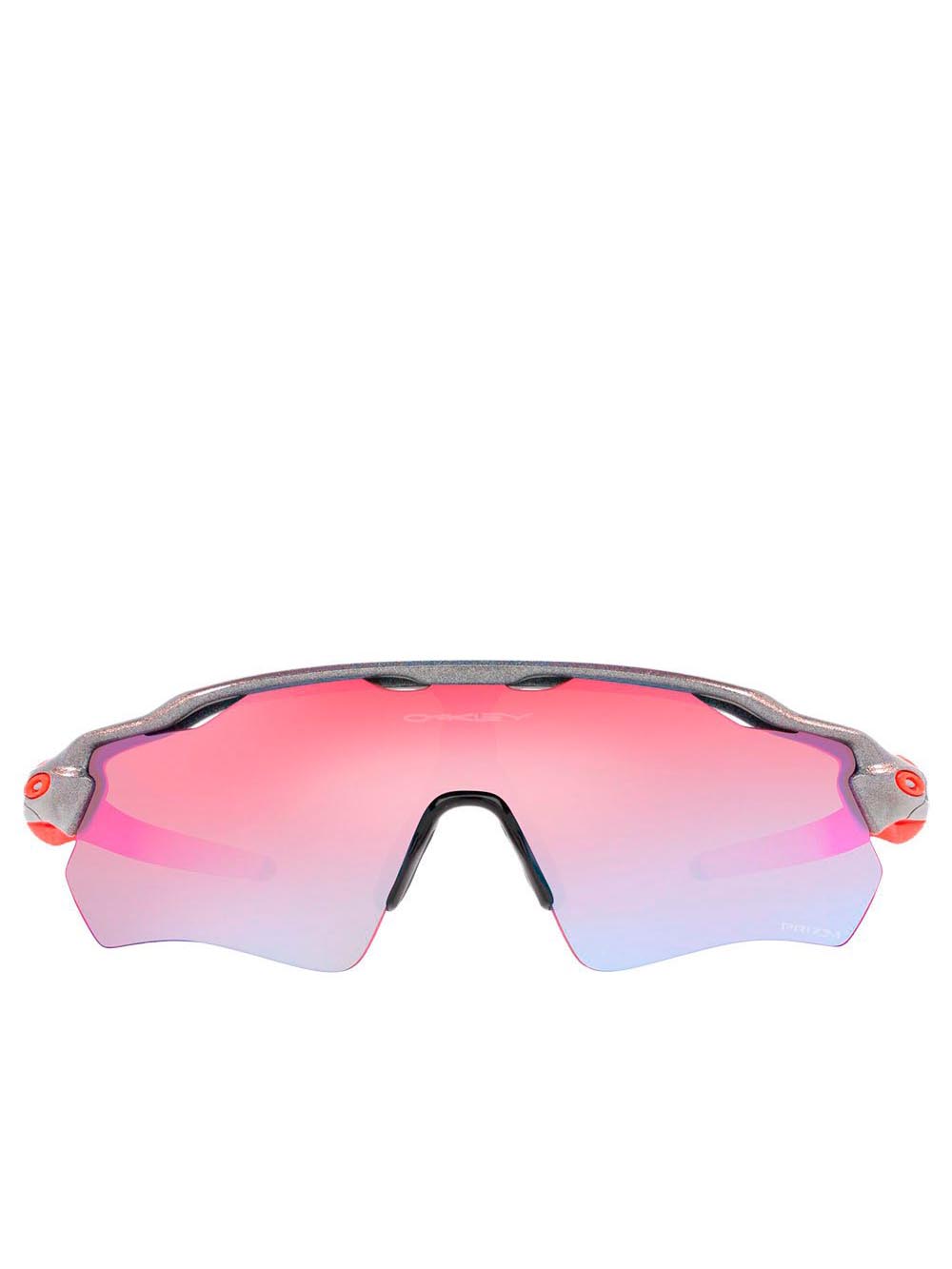
Best for larger heads
Oakley’s updated Radar EV Path is a performance-centric choice best suited for runners with larger heads and faces because of its wide and solid frame.
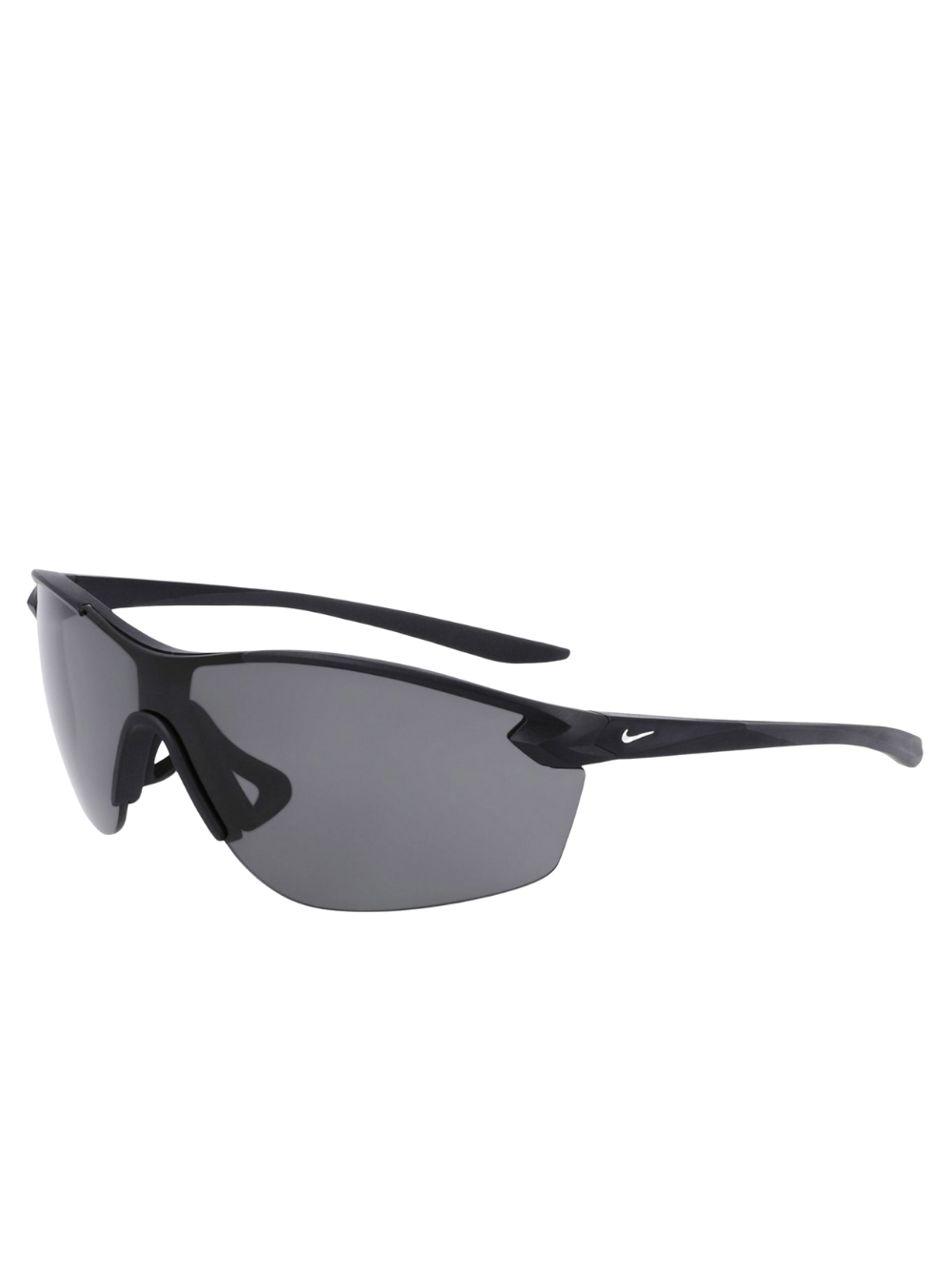
Best for women
Minimalist in design, yet packed with performance-driven features for runners. Engineered for women with input from competitive athletes, the Nike Victory Elite sunglasses offer a secure, wraparound fit that enhances your field of vision while providing extra UV protection.
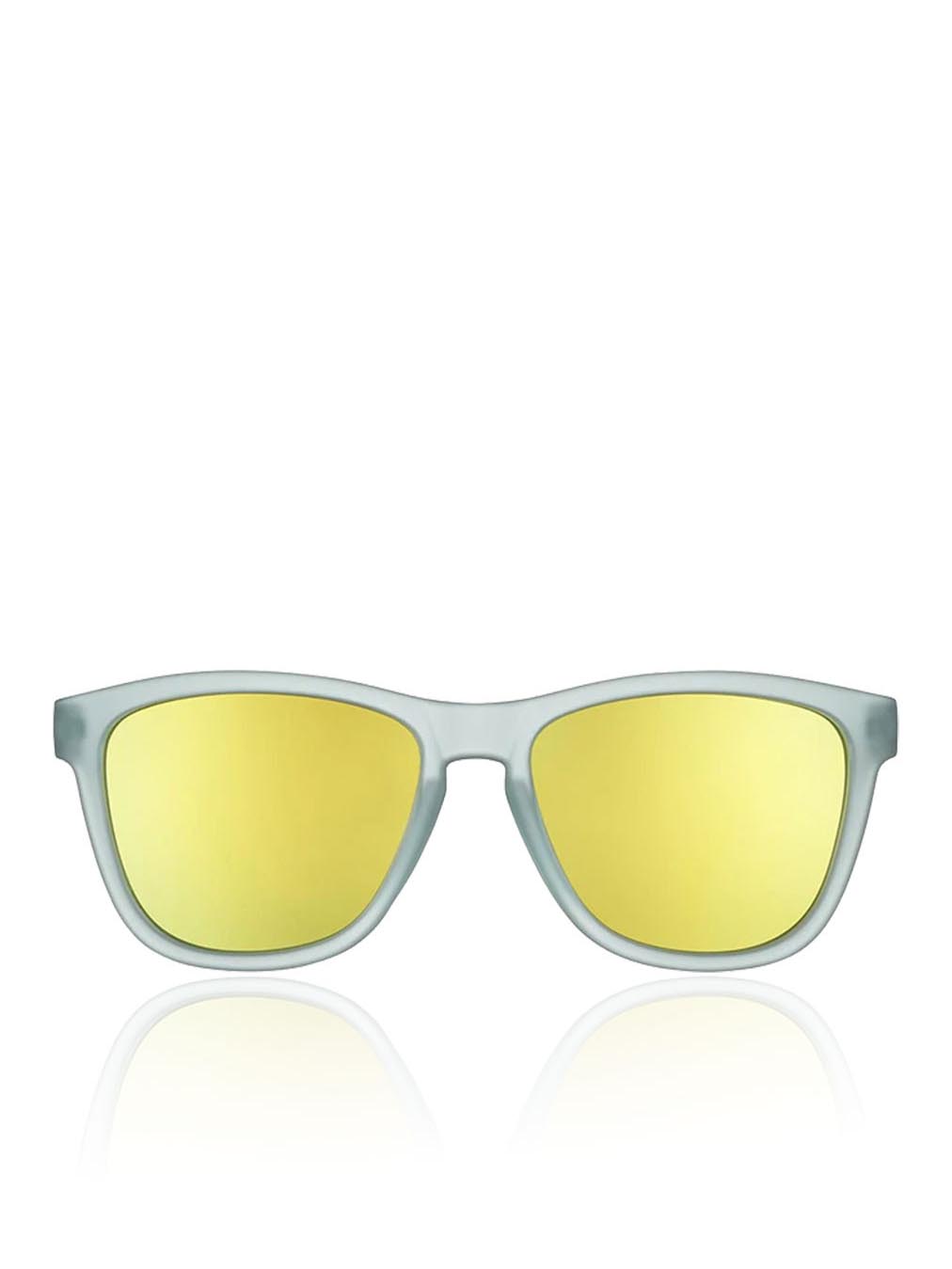
Best budget
For those of us who don’t want to spend the equivalent of a car payment on running sunglasses, the Goodr OGs are an amazing find. They easily transition to more general usage too.
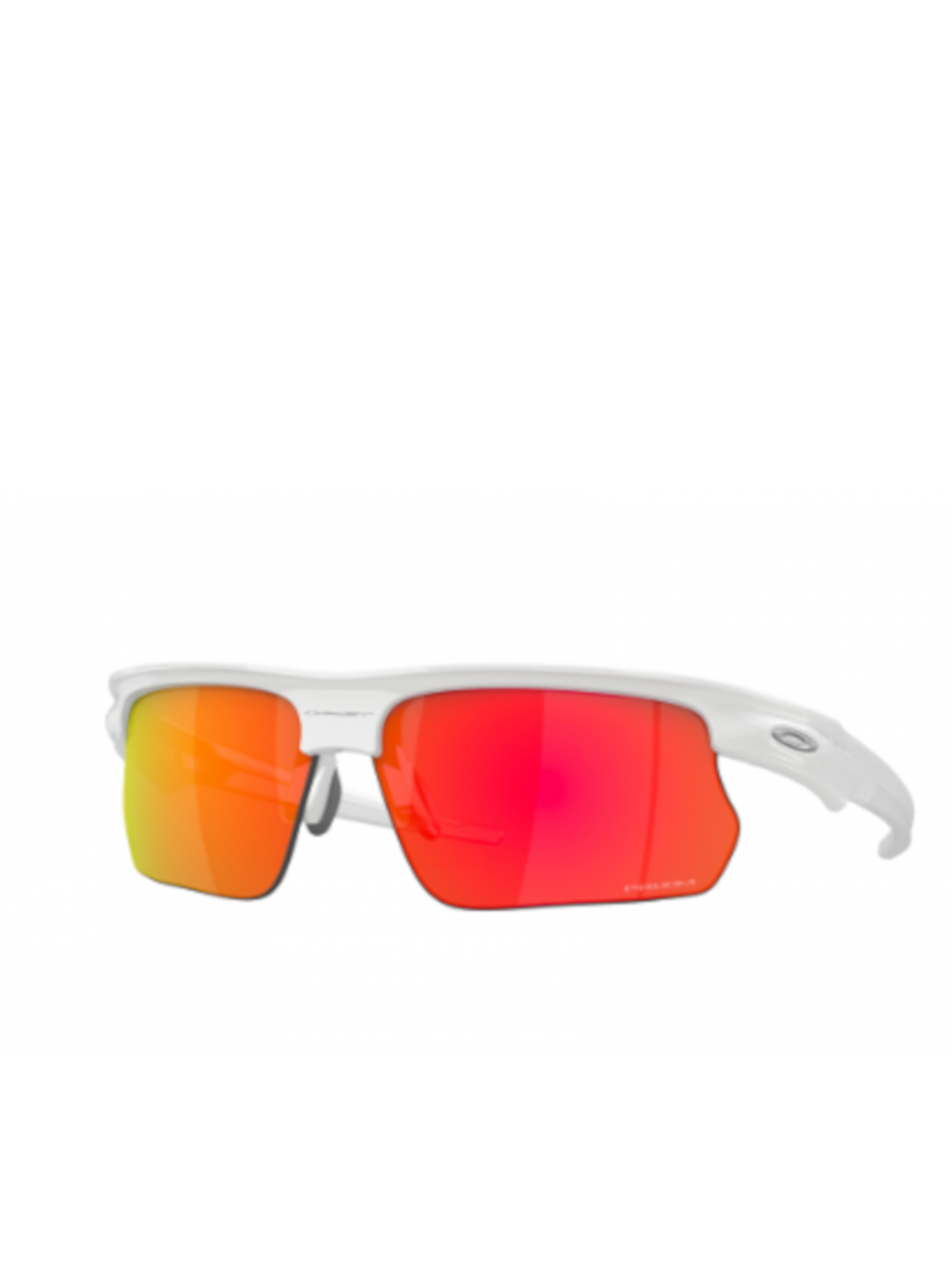
Best for prescription
The ideal pair of running sunnies for those looking for a prescriptive pair of performance driven eyewear. Oakley has coined the BiSphaera its most 'forgettable' sunglasses and can't disagree after testing them.
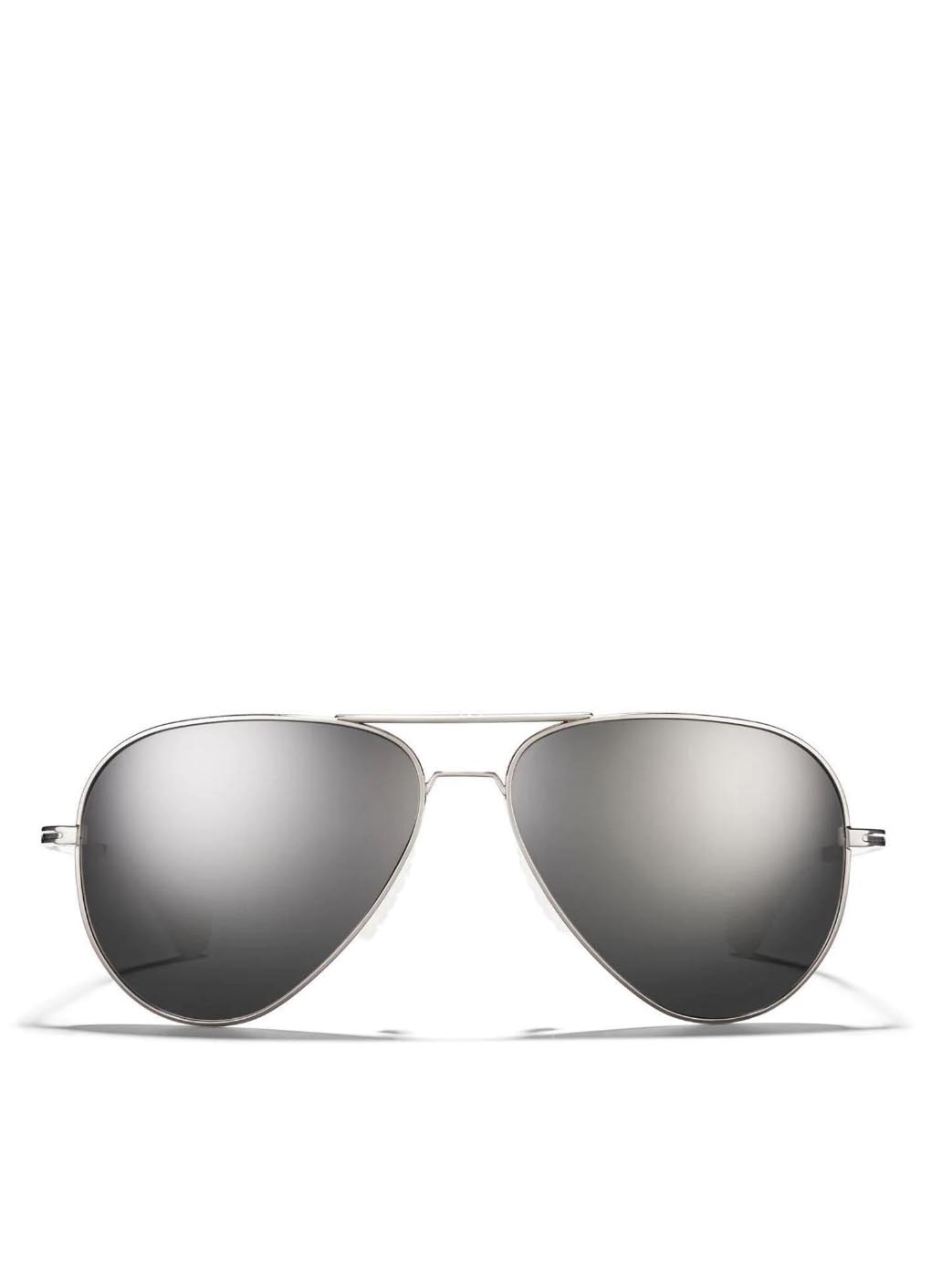
Best lightweight
The ROKA Phantom Titanium is a stylish (and high-end) pair of running sunglasses that feel virtually weightless. Besides that, the Phantom Titaniums just look so effortlessly cool.
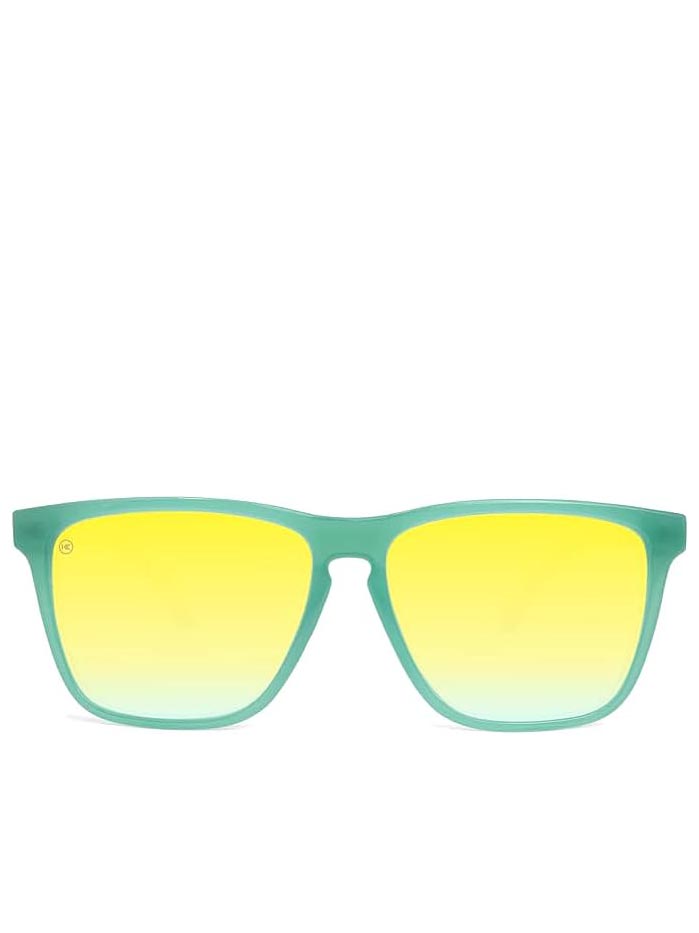
Most versatile
Whether you're out on a run or out on the town, the Knockaround Fast Lanes are comfortable and protective without sacrificing style thanks to the simple yet classic design.
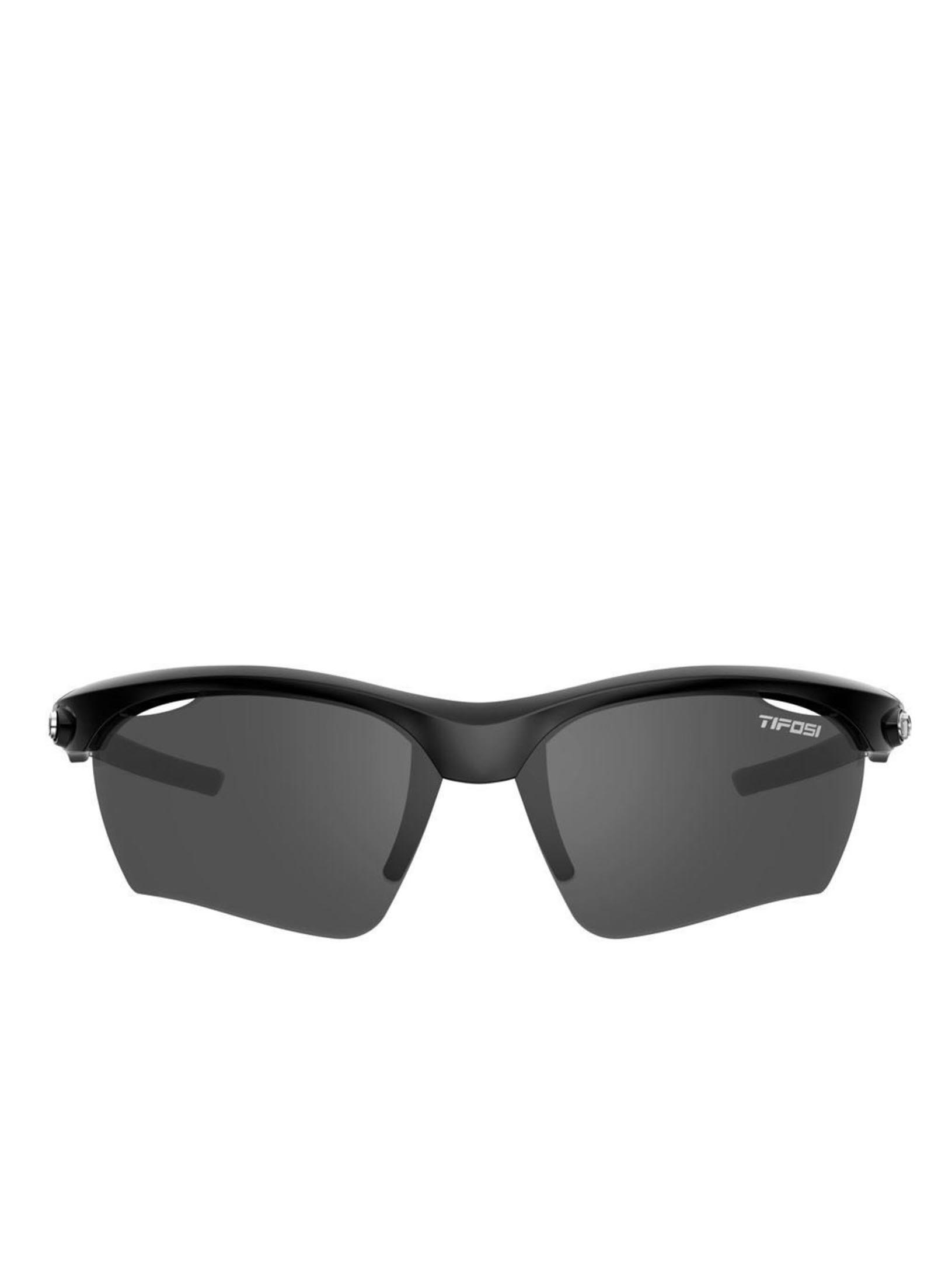
Best for small face
Tifosi shrunk their best-selling frames to create the Vero — perfect for runners with smaller features. Included are 3 interchangeable lenses — a traditional gray lens, an “all conditions red” lens, and a clear lens.
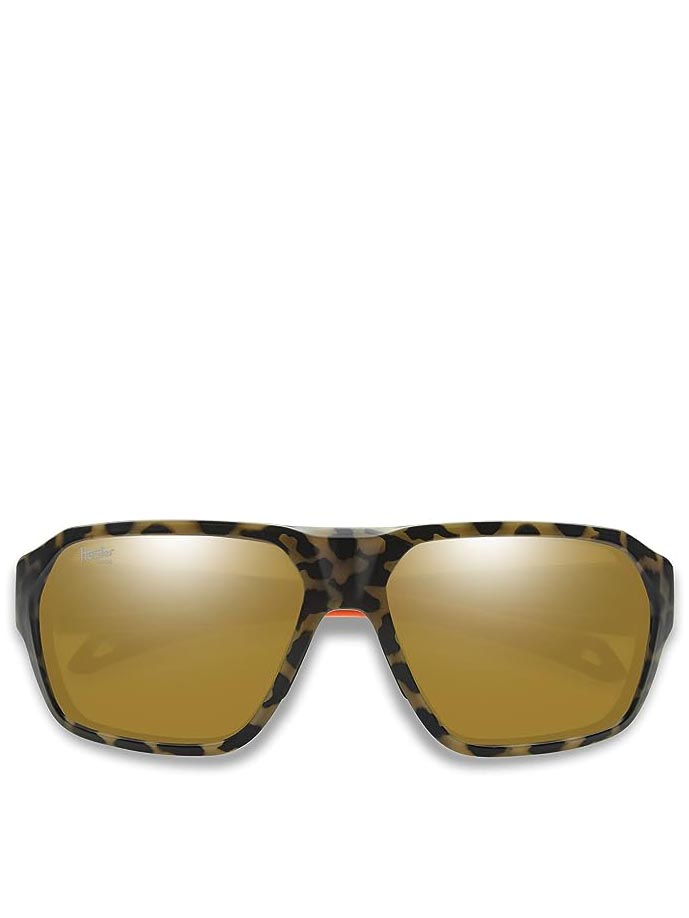
Best for large faces
Perfect for runners with bigger heads or face shapes, because of the above-average lens height and an base-8 curvature, these provided the best coverage of any pair of running sunglasses on our list.
Best running sunglasses overall
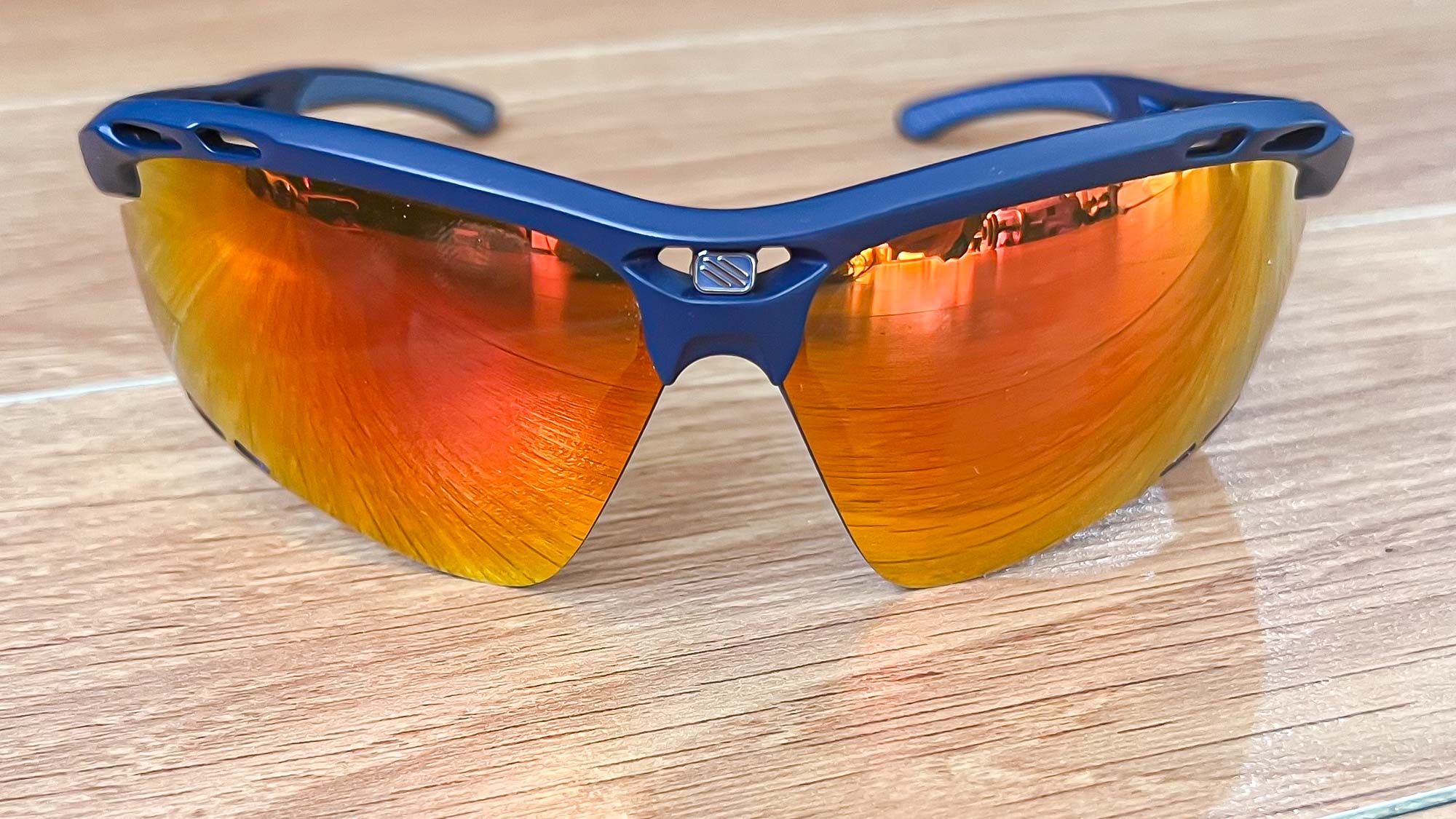
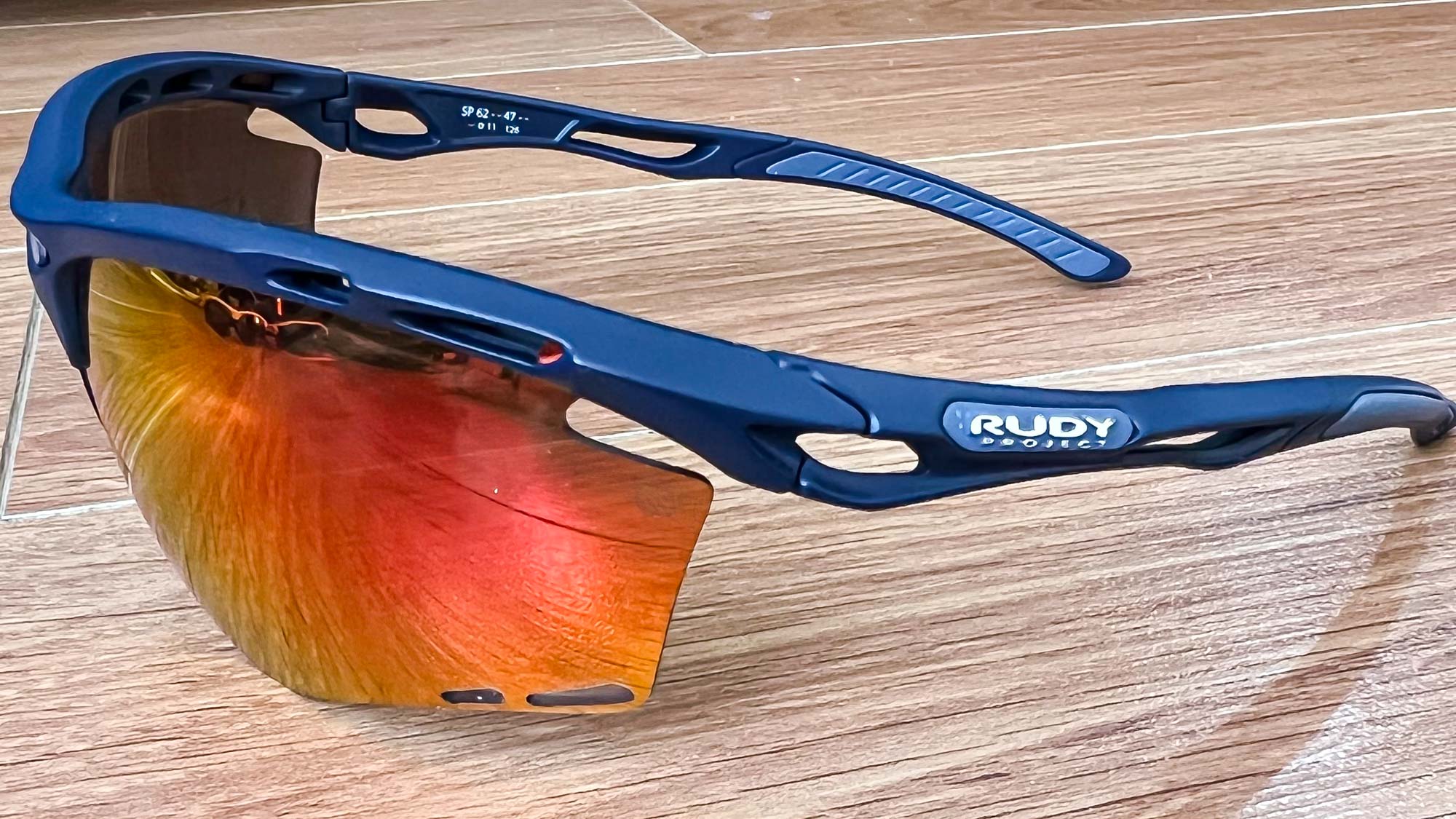
1. Rudy Project Propulse
Our expert review:
Specifications
Reasons to buy
Reasons to avoid
The Rudy Project Propulse is a nearly perfect running companion. Weighing in at just under one ounce with condensation-inhibiting vents on the front chassis, temples, and lenses, you may forget that you have the Propulses on in the first place (a sure sign of a fantastic pair of shades).
Despite feeling lightweight, the Propulse isn’t what I would consider fragile — the frame and temples are constructed from a relatively heavy-duty plastic with a pliable, rubbery arm. This malleability allows the Propulse to fit a variety of face shapes, although they’re best suited for a small or medium sized head. They stayed solidly in place on my average-sized skull, without producing enough pressure to create a tension headache.
Venting directly on the lenses and frames is a design choice I’d not seen on any other pair of running sunglasses, so I was eager to test them out in conditions where a fogged-up lens was all but guaranteed. On our initial test, we noticed the smallest amount of misting near the top of the lens, but it wasn’t enough to distract me or require a wipe-off. To be honest, I was still very impressed with the Propulse’s performance. Similar weather conditions would fog up other sunglasses I owned within seconds, and I’d have to wipe them off while still trying to maintain pace.
When I popped the Propulses back on for the following afternoon’s run, I took advantage of the Rudy Project’s vent control system — the ability to adjust the lens within the frame, creating an altered airflow pattern. The minimal fogging I had experienced the previous day was absent. A very minor problem, solved.
Initially, I assumed that the downside to these lens and frame vents would be that they’d allow some unwanted sunlight in, especially if I was running on light concrete. Surprisingly, this was not the case, the Propulse’s base-8 curvature (a measurement of the lens’ degree of wrap-around effect) paired with a wide lens resulted in almost flawless coverage wherever I ran.
Best running sunglasses for larger heads
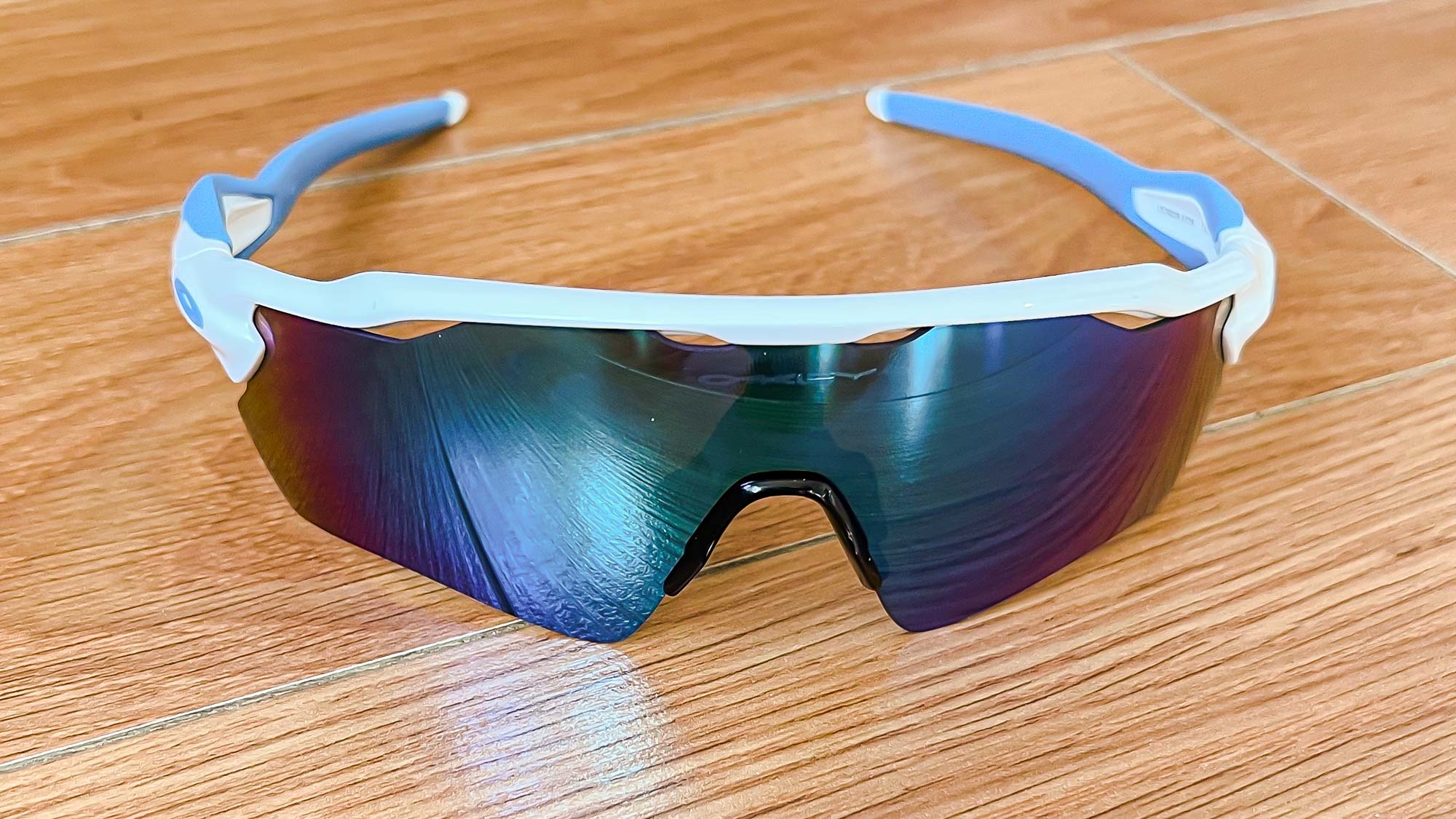
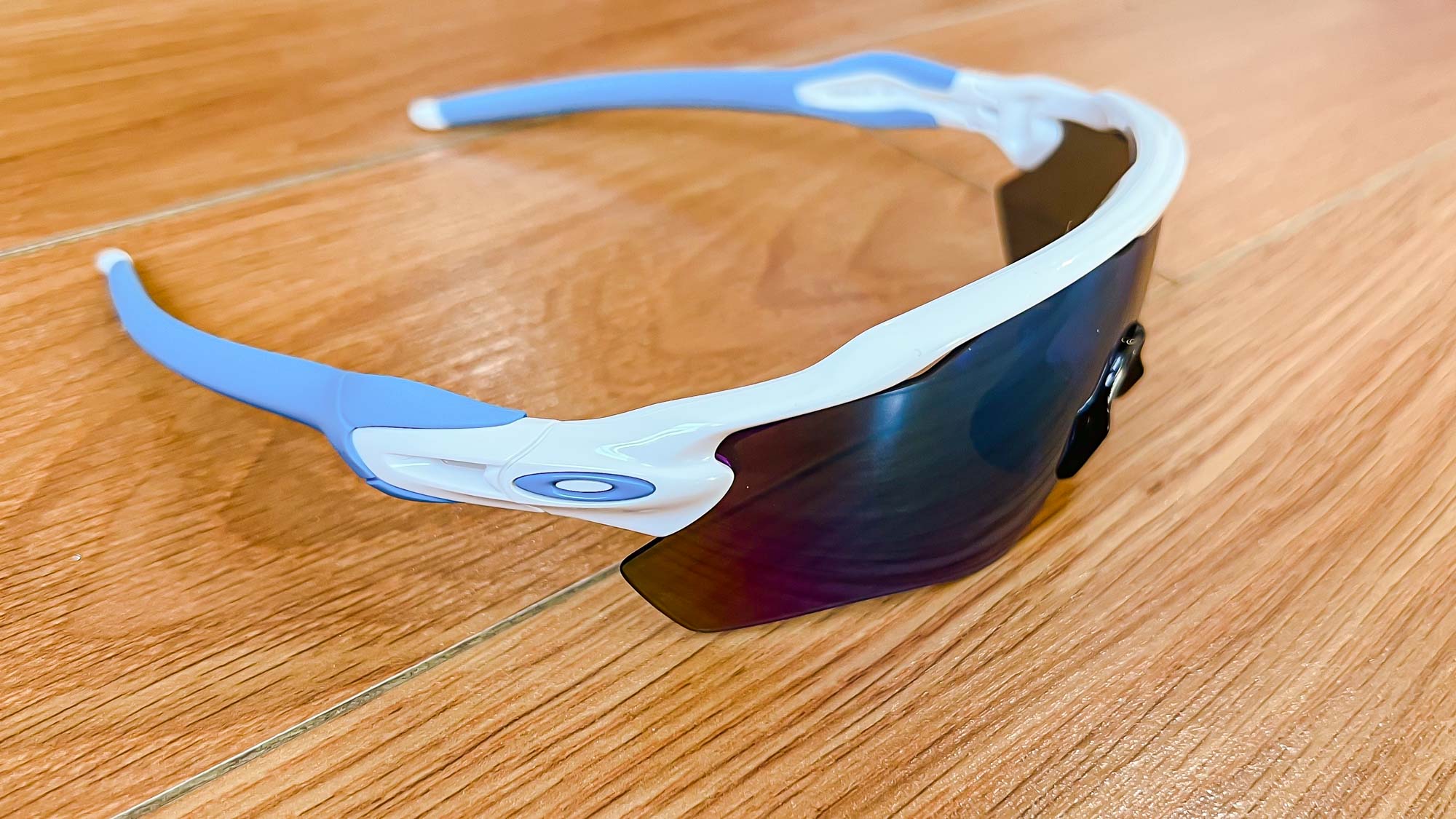
2. Oakley Radar EV Path
Our expert review:
Specifications
Reasons to buy
Reasons to avoid
It would be hard to compile a best running sunglasses list without including Oakley at least once. The brand has long been synonymous with high-quality outdoor sporting apparel, and frequently leads the pack with their technical advances and performance-centric designs. For the most part, Oakley’s updated Radar EV Path is no exception.
According to Oakley, the Radar EV Path’s taller lens leads to increased viewing range in the upper peripheral region of your vision. Initially, this was an aspect that I didn’t anticipate noticing on my runs. Once I got out on the road however, it was very apparent, instead of my eyeline hitting the top of the frame when I glanced forward, I’d hit nothing but the lens. The taller lens, paired with the Radar EV Path’s wrap-around design, actually made a much bigger coverage difference than I thought it would.
Speaking of lenses, I tested a pair of Radar EV Paths with Oakley’s “Prizm” technology that increases contrast and enhances colors. While my surroundings seemed a bit brighter and more detailed (without too much glare, despite a lack of polarization), these features stood out less than the Radar EV Path’s lens length.
Even with a taller lens and a wide frame, the Radar EV Paths are relatively lightweight due in part to Oakley’s trademarked “O Matter” material construction. Thanks to another Oakley innovation, the Radar EV Path stayed put for the entirety of my runs. The nose pads and temple arms made from “Unobtanium” kept the sunglasses comfortably secure with each mile that passed. After the runs however, the nose piece kept coming off, something that surprised me given Oakley’s reputation and price point. Luckily, replacement nose pads are included with the Radar EV Path, along with a protective carrying case.
Because of its wide and solid frame, the Radar EV Path is best suited for men (or runners with larger heads and faces). I appreciated the various technical features during testing, but at the end of the day, I felt like the frames were just simply too big and overpowering. That’s not to say women runners can’t benefit from the Radar EV Path, but several other pairs on our list are designed to be a better fit for smaller faces.
Best running sunglasses for women
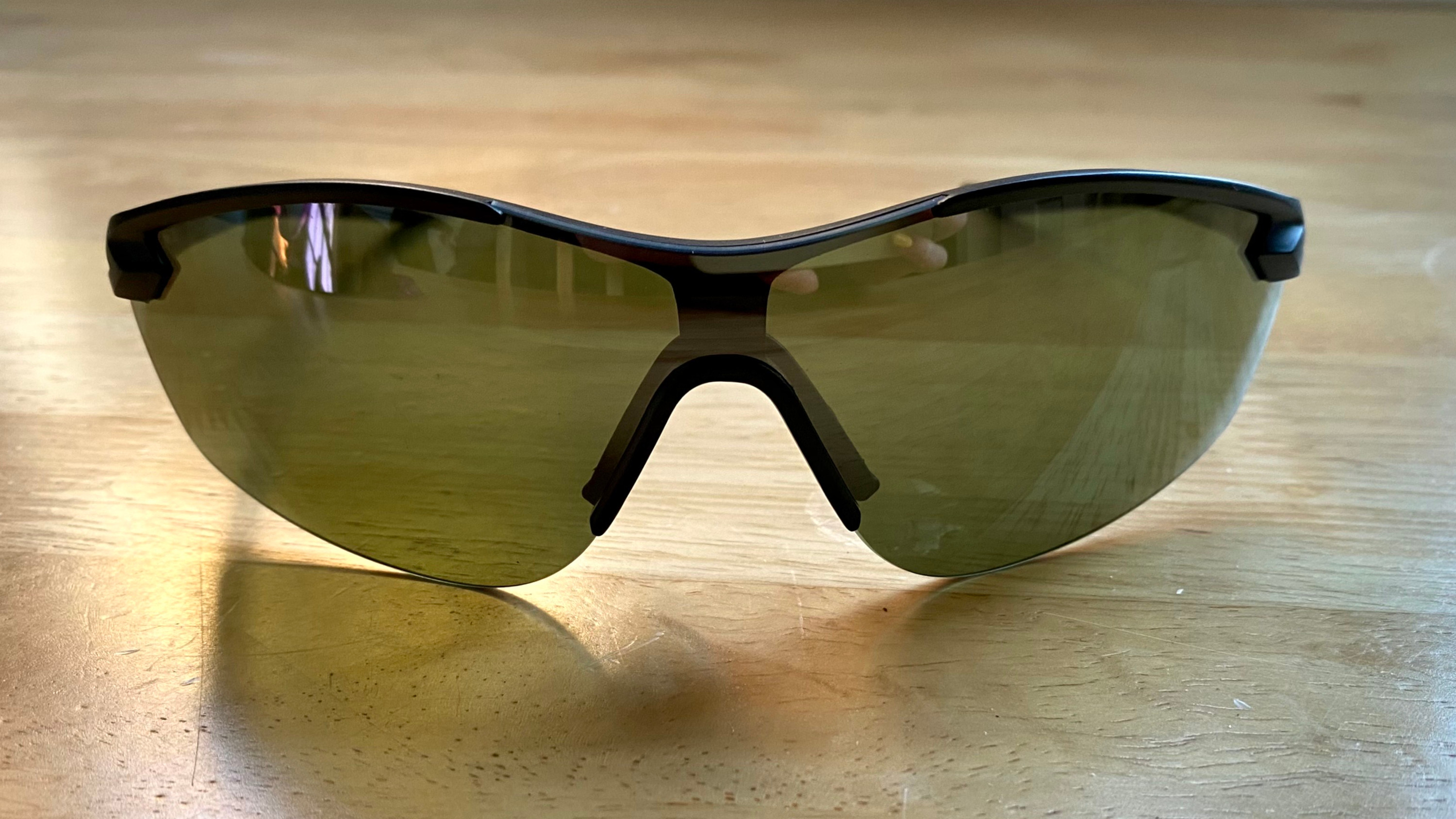
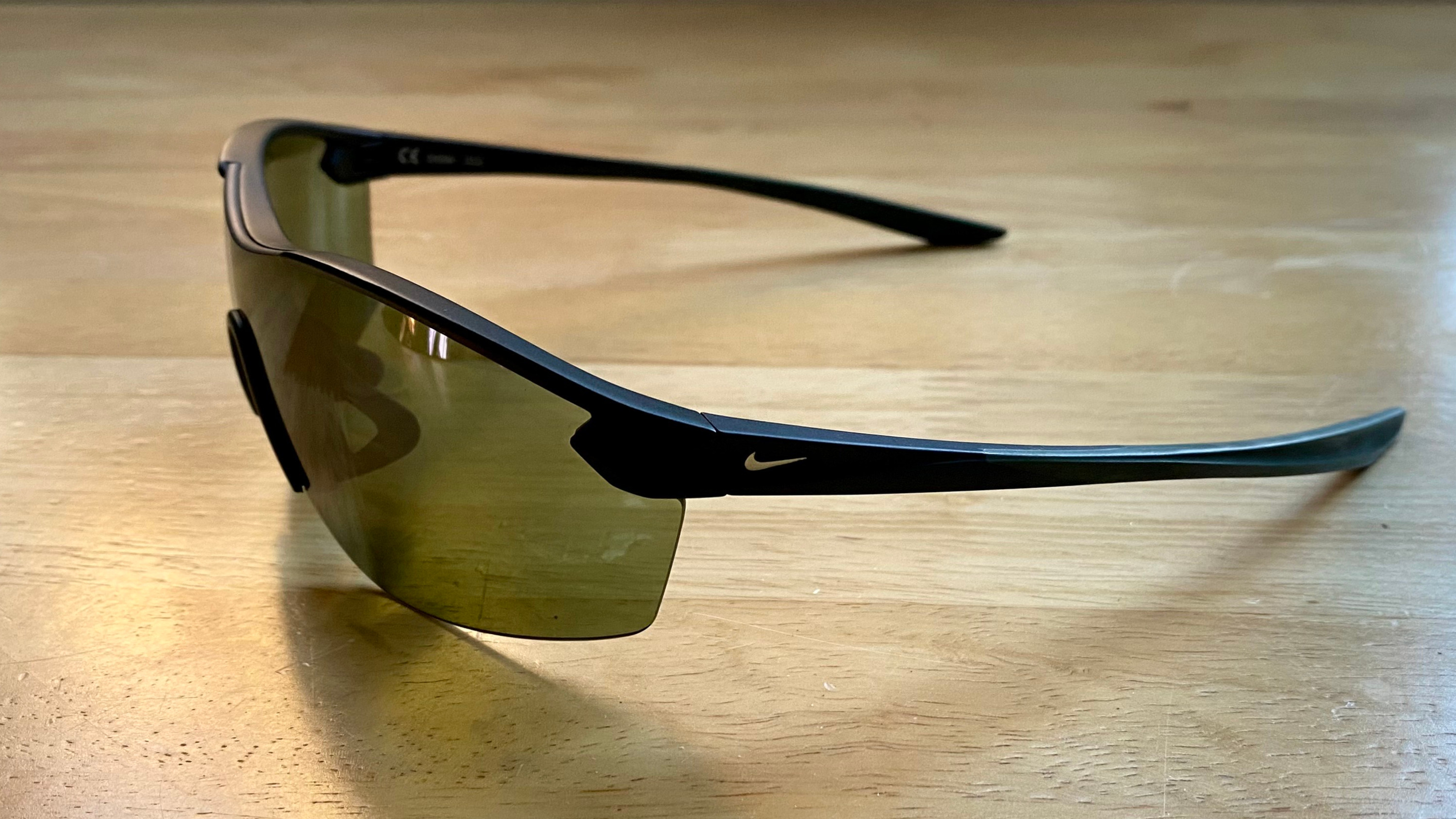
3. Nike Victory Elite
Specifications
Is it just me, or are running sunglasses getting bigger and bolder with every new release? Lately, oversized, brightly colored frames have become as much a fashion statement as a performance tool for some. But not everyone wants to look like they’re stepping straight off a pro cycling tour. Some runners just want sleek, effective eyewear that enhances their vision without drawing too much attention.
That’s exactly what I found in the Nike Victory Elite women’s sunglasses while training for a marathon. These sunglasses feature a wraparound, one-piece contour lens that maximizes coverage and cuts down on distractions, two essentials when you’re logging serious miles.
Nike designed them specifically for women, incorporating insights from professional runners. The fit felt secure, especially after having a little play around with the adjustable nose bridge, and once they were on, they stayed put. No slipping, bouncing, or mid-run readjustments.
The wraparound lenses didn’t just protect my eyes from the sun; they also provided uninterrupted vision, which is crucial when navigating changing terrain or pacing through a busy race start.
My only gripe? They feel a little delicate, so I was extra careful to store them in their case when not in use. But if you’re after performance-focused running sunglasses that prioritize function over flashy aesthetics, the Victory Elites are a solid pick.
Best budget running sunglasses
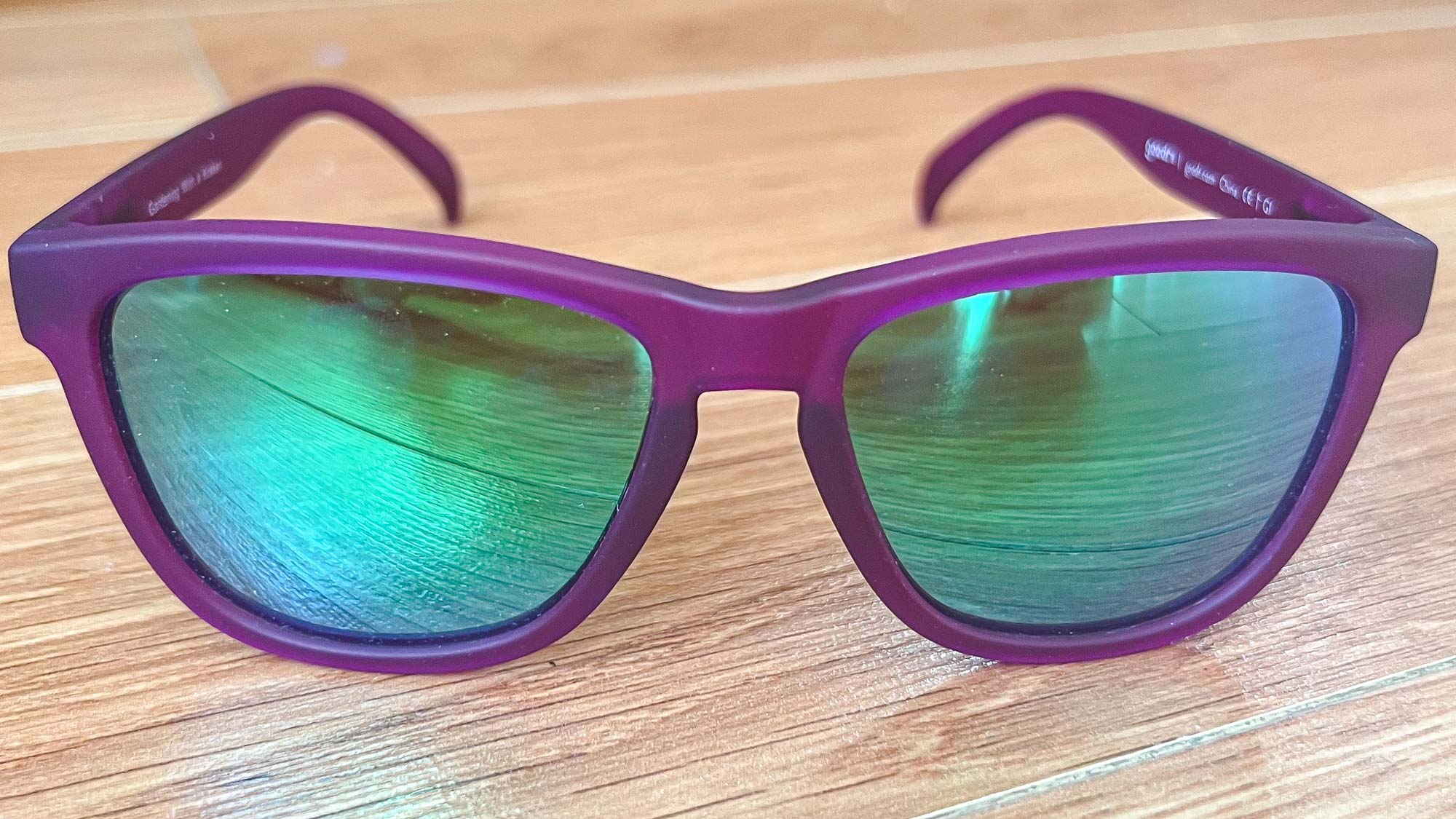
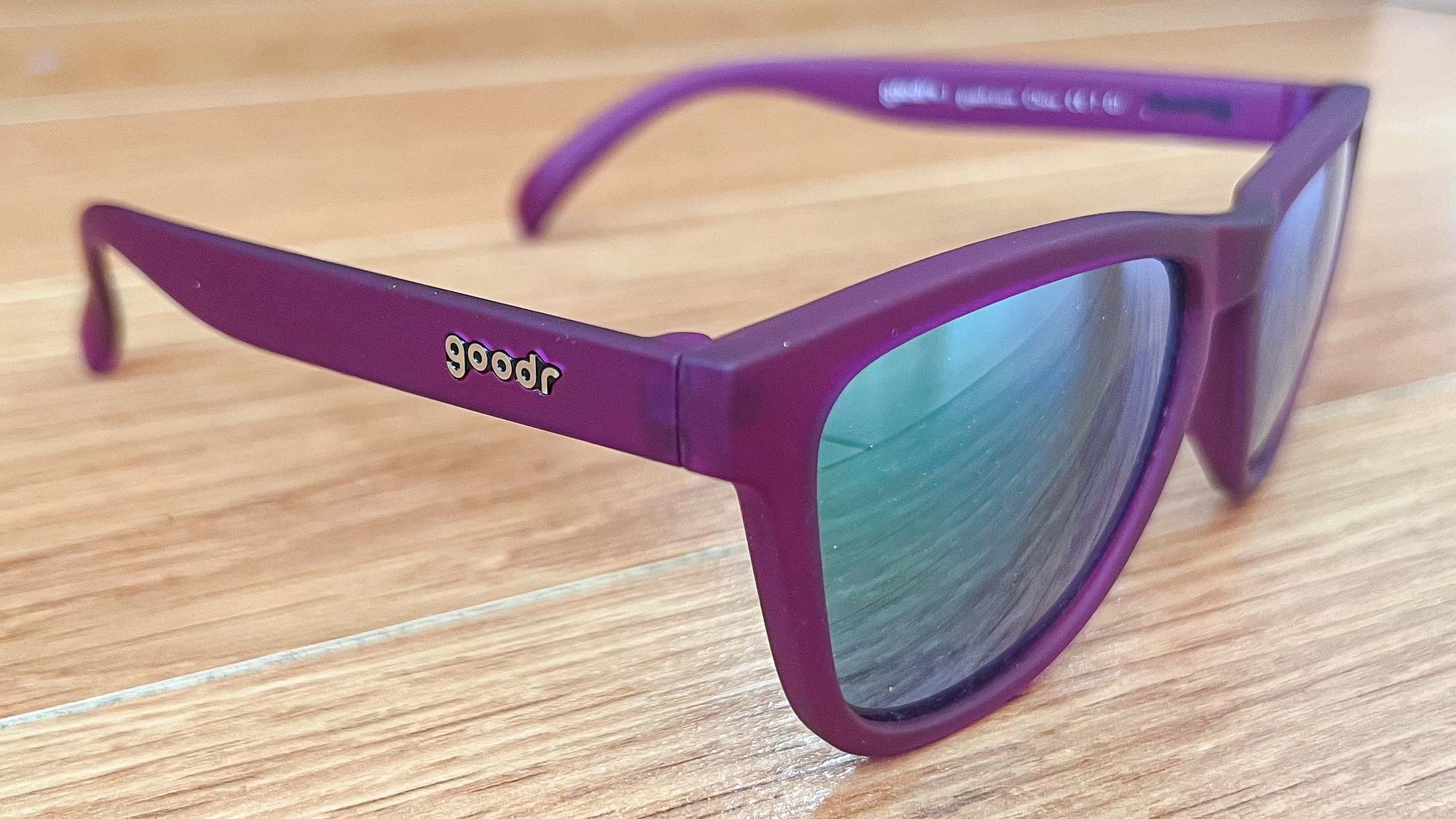
4. Goodr OG
Our expert review:
Specifications
Reasons to buy
Reasons to avoid
Given the almost unbelievably low price of the Goodr OGs, I was very skeptical of their quality. I’d purchased tons of low-cost sunglasses before (the key word here being tons, I’d always have to replace them when they broke after a few weeks), but none of them had ever worked for my run days. They’d slide off my nose, or the lenses would fog, or they’d bounce so much I’d start to get vertigo around mile two.
But the Goodr OGs shocked me in the best way possible. Not only did they stay put for an entire 5k, a feat that no model without nose padding had been able to accomplish, they held up in my purse and gym bag without bending or breaking (and without me worrying about them bending or breaking).
Unlike some of the costlier models on our list, the Goodr OGs have a much thicker frame and a classic, Wayfarer-esque design. This kind of a build has several advantages: the sturdy and robust temples are way less susceptible to snapping in half, the lenses are fully encased and protected by the rim, and they easily transition to more general usage (with lens and frame options for nearly every occasion).
The major downside to this shape is coverage. While I still felt the Goodr OGs did a decent job of blocking rays, because the lenses don’t wrap around the eye as much as other running sunglasses, you’re guaranteed to get some leakage around the edges. Honestly this didn’t affect me too much, and I have very light-sensitive eyes. Still, it’s something that should be noted, especially if you run in very sunny environments.
Another disadvantage to the Goodr OGs is their size, while they fit my head perfectly, they may prove to be a little snug on those with larger face shapes. Fortunately, Goodr offers the “BFG'' model that features longer arms, wider frames, bigger lenses, and silicone nose pad inserts. They’re $10 more than the OG, but still substantially cheaper than the majority of other sunglasses on our list.
Best running sunglasses for prescription
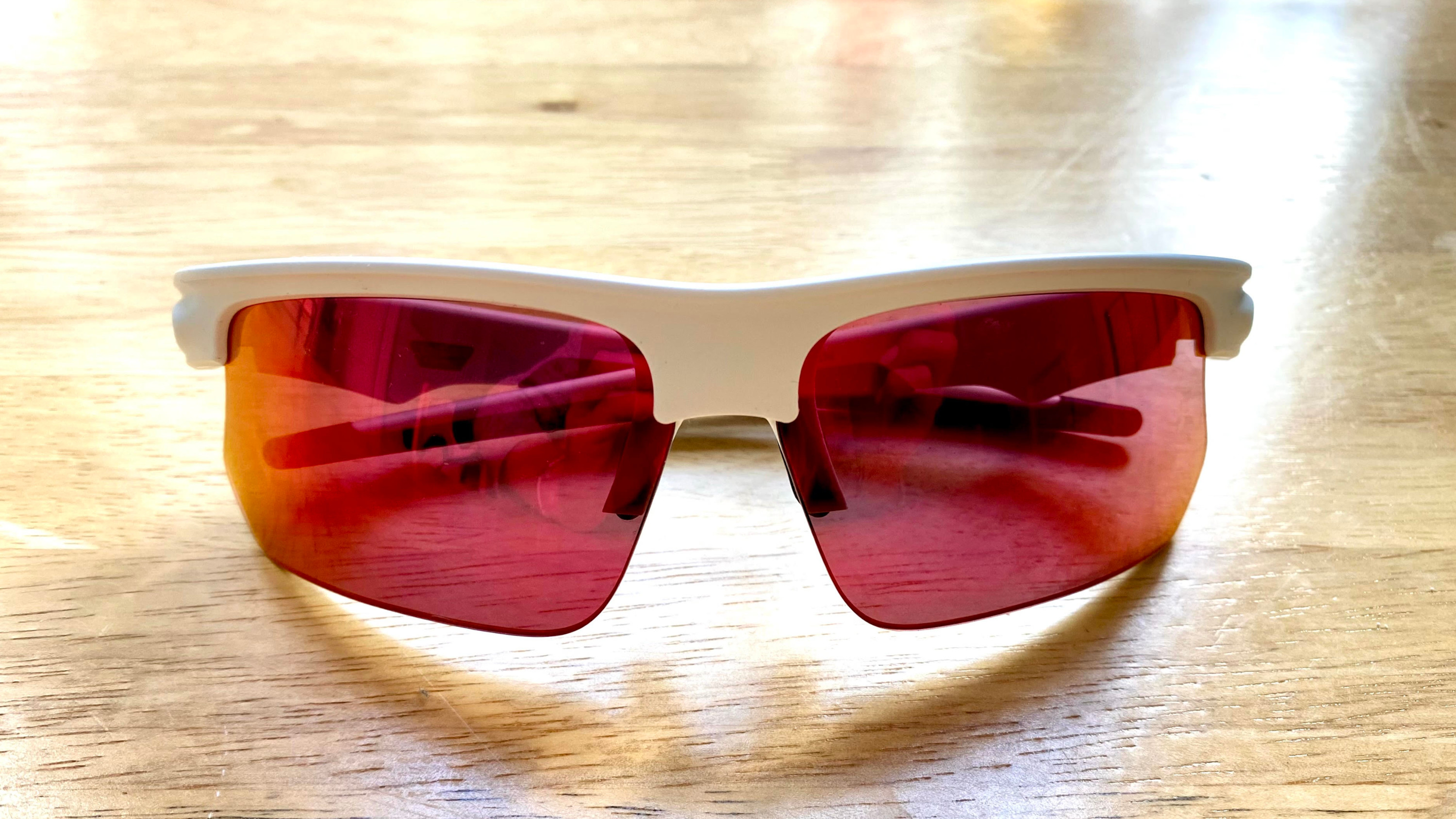
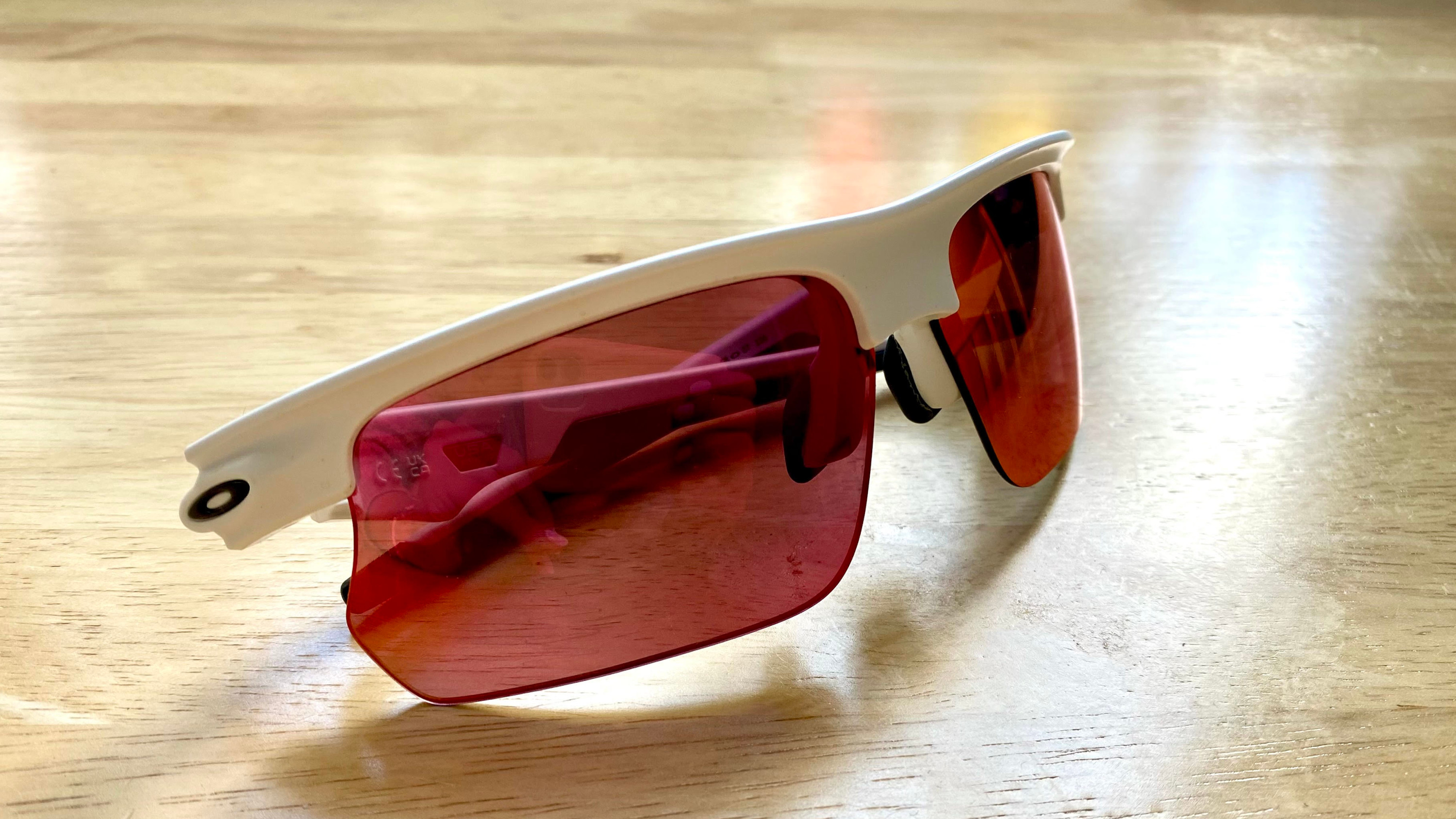
5. Oakley BiSphaera
Our expert review:
Specifications
Reasons to buy
Reasons to avoid
Just because you are looking for a pair of running sunglasses that offer prescriptive lenses, doesn't mean for one second that you have to sacrifice the level of performance or style they will offer. After testing Oakley's BiSphaera sunglasses during an intense block of marathon training I was extremely impressed with just how lightweight they feel on the face and the quality of vision the lenses offer in a mix of weather conditions.
If you require prescription eyewear, the BiSphaera sunglasses accommodate this with the dual-lens feature, helping lenses wearers experience clear vision and enhanced performance during while running in the great outdoors. Versatility and functionality is something I look for in a pair of good running sunglasses which is why I'd recommend this pair to both those looking for a prescriptive pair of running sunglasses and those who simply appreciate enhanced clarity and comfort in sports eyewear.
Oakley says this is its most 'forgettable' pair of sunglasses yet and I can't object. The frame and design are extremely unobtrusive, so much so that it is easy to forget that they are on your head. However, you are left with a little reminder of wearing these sunnies as I noticed I was left with temporary dents on our noses from the nose pads. This was a very minor thing we noticed and just a sign that you have been out ticking off those miles - while looking stylish.
Plus, the wide lens on this pair of glasses offers a wide field of view and enhances your peripheral vision while wearing the glasses, something I benefitted from while racing in this pair of running sunglasses as I was able to take in the road ahead and the crowds around me.
Best lightweight running sunglasses
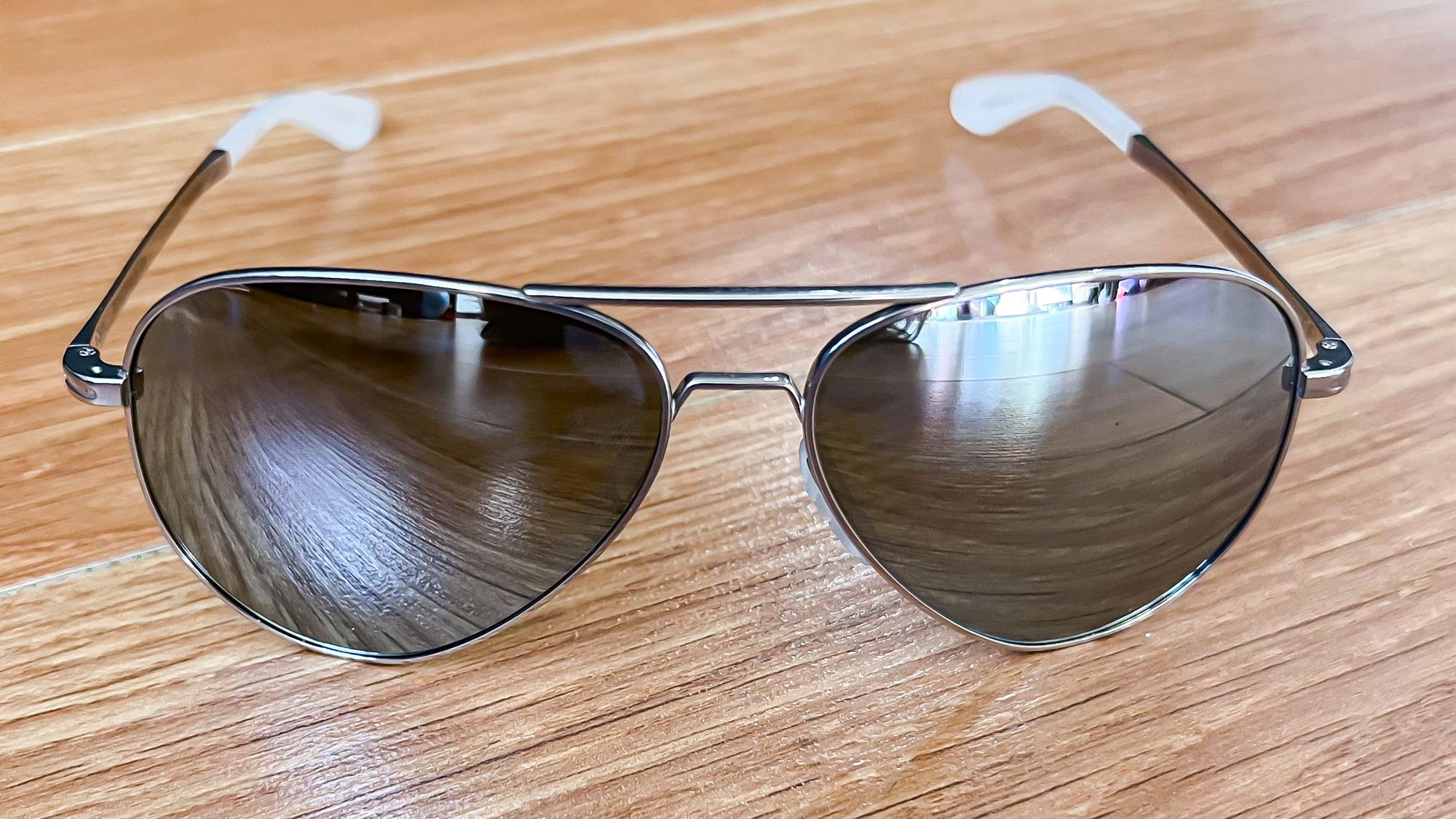
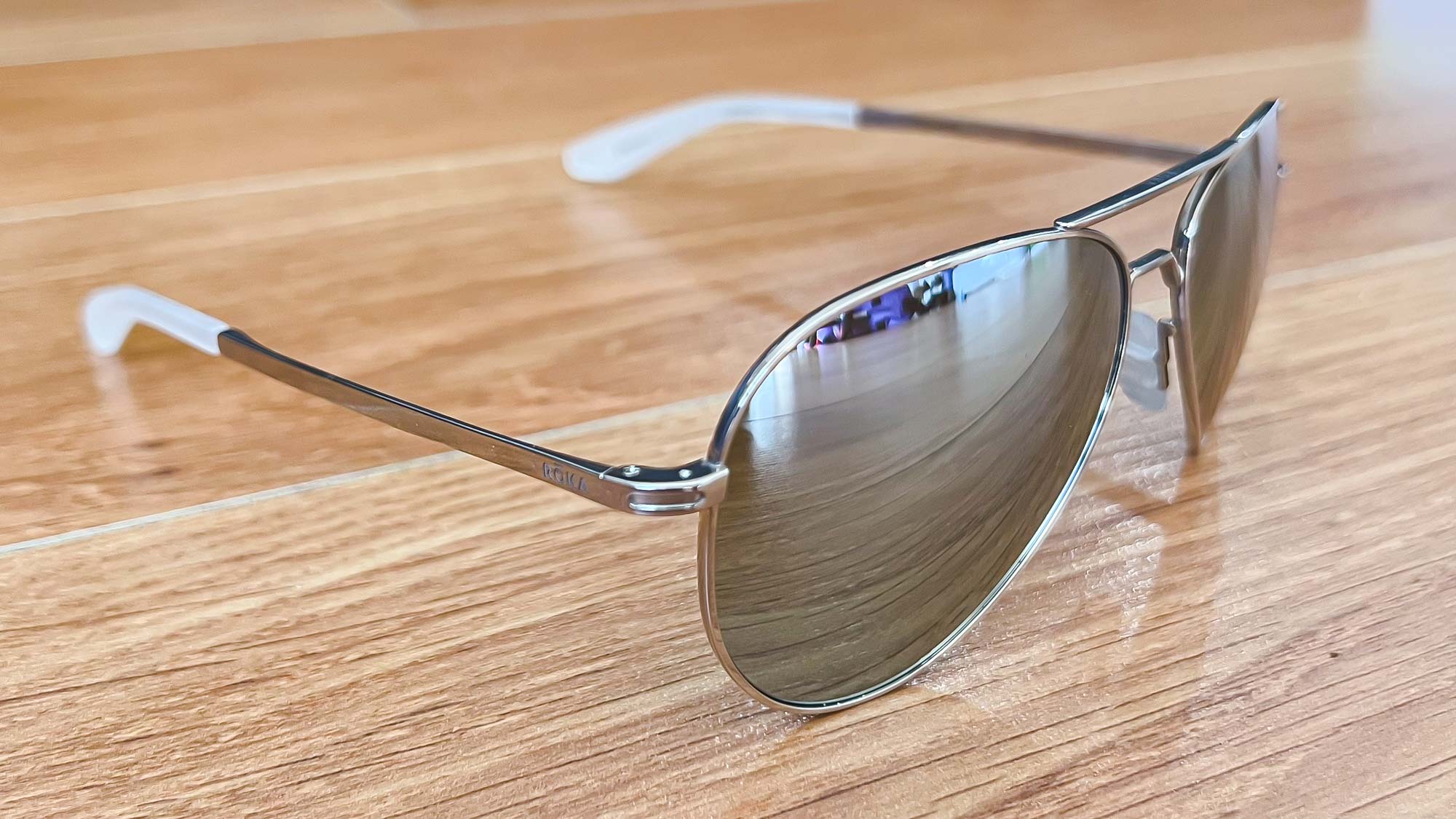
6. ROKA Phantom Titanium
Our expert review:
Specifications
Reasons to buy
Reasons to avoid
Ask any runner and they’ll tell you, items carried on a race will get exponentially heavier as the miles pass. That’s why a lightweight pair of shades is crucial, and you won’t get much lighter than the ROKA Phantom Titanium.
At just over half an ounce, the ROKA Phantom Titaniums are virtually weightless. I slipped them on before a run, and could barely tell I was wearing anything at all. This stayed true for the entirety of my workout, where ROKA’s patented GEKO nose and temple padding kept the sunglasses secure but not annoyingly tight. After I walked into my apartment to stretch and cool down, it took me a few minutes to realize they were still on my face.
The ROKA Phantom Titanium owes its feather-like qualities to the “titanium” part of its name. This ultra-lightweight alloy retains a relatively high level of tensile strength and resists corrosion, so while the frames and temple arms may look a little fragile, you can rest assured that they’ll hold up for all of your outdoor efforts. The drawback to this construction is flexibility — there is none, really. So if you have a larger-than-average head or face, you’ll want to look into the Phantom Titanium’s “XL” sizing.
Besides that, the Phantom Titaniums just look so effortlessly cool. Their sleek and shiny aviator design made me feel like I’d stepped onto the set “Top Gun” whenever I wore them (I’m sure having “Danger Zone” on my running playlist helped to create that imagery). They also switched to more casual usage very easily, and garnered plenty of complements at a bachelorette party I attended. ROKA offers a decent range of frame and lens color options for the Phantom Titanium, so finding a pair that works for your running routes and your social calendar shouldn’t be too difficult. It’s nice to have that versatility, especially considering that the Phantom Titaniums are the most expensive sunglasses on our list.
While aviators are stylish, they lack the full-coverage properties of many popular running sunglasses. This is true of the Phantom Titanium, I definitely experienced light leakage at the top and around the sides of the frame. It didn’t prove to be too much of an issue for me, but it’s still worth mentioning.
Best running sunglasses for versatility
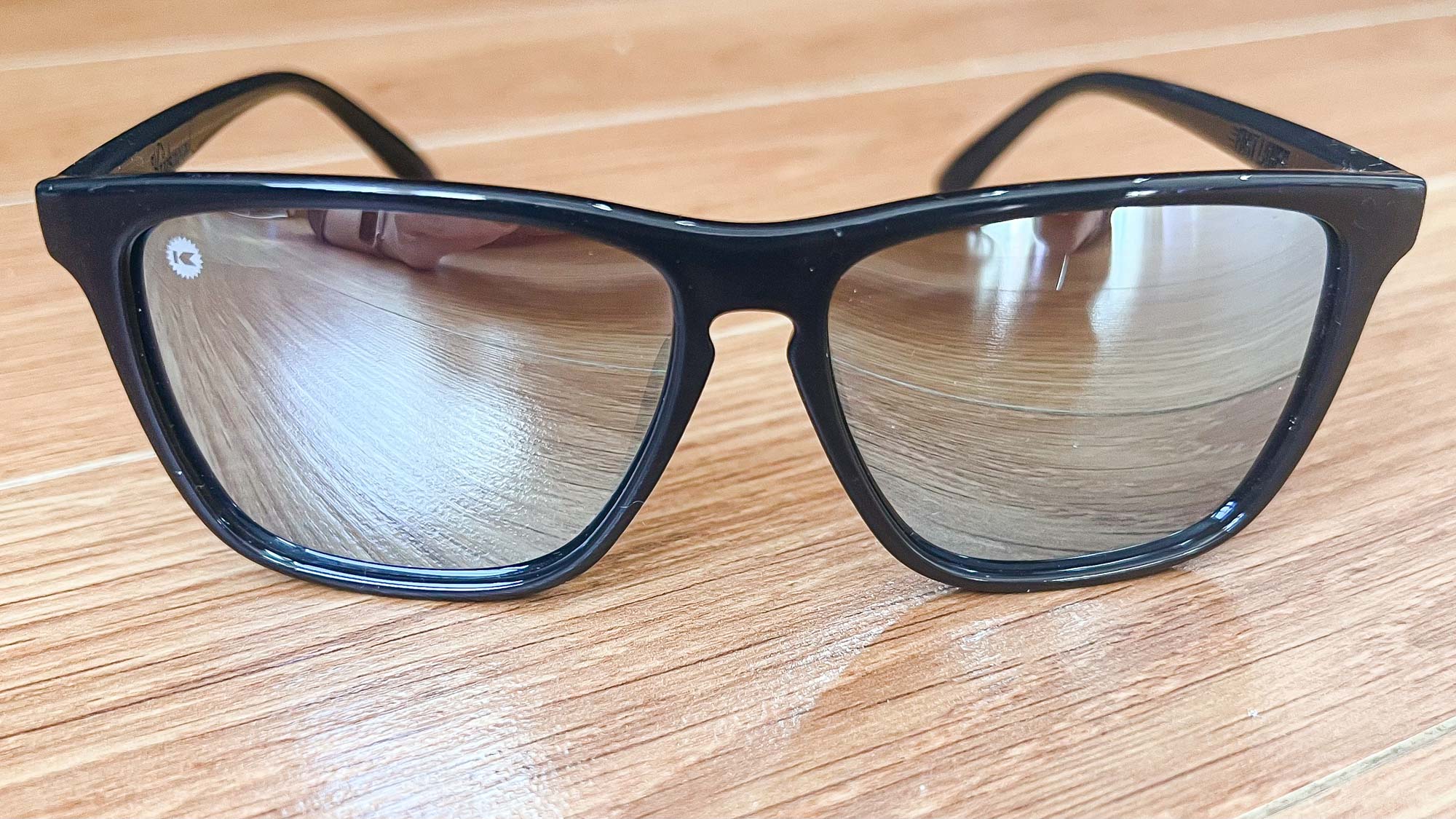
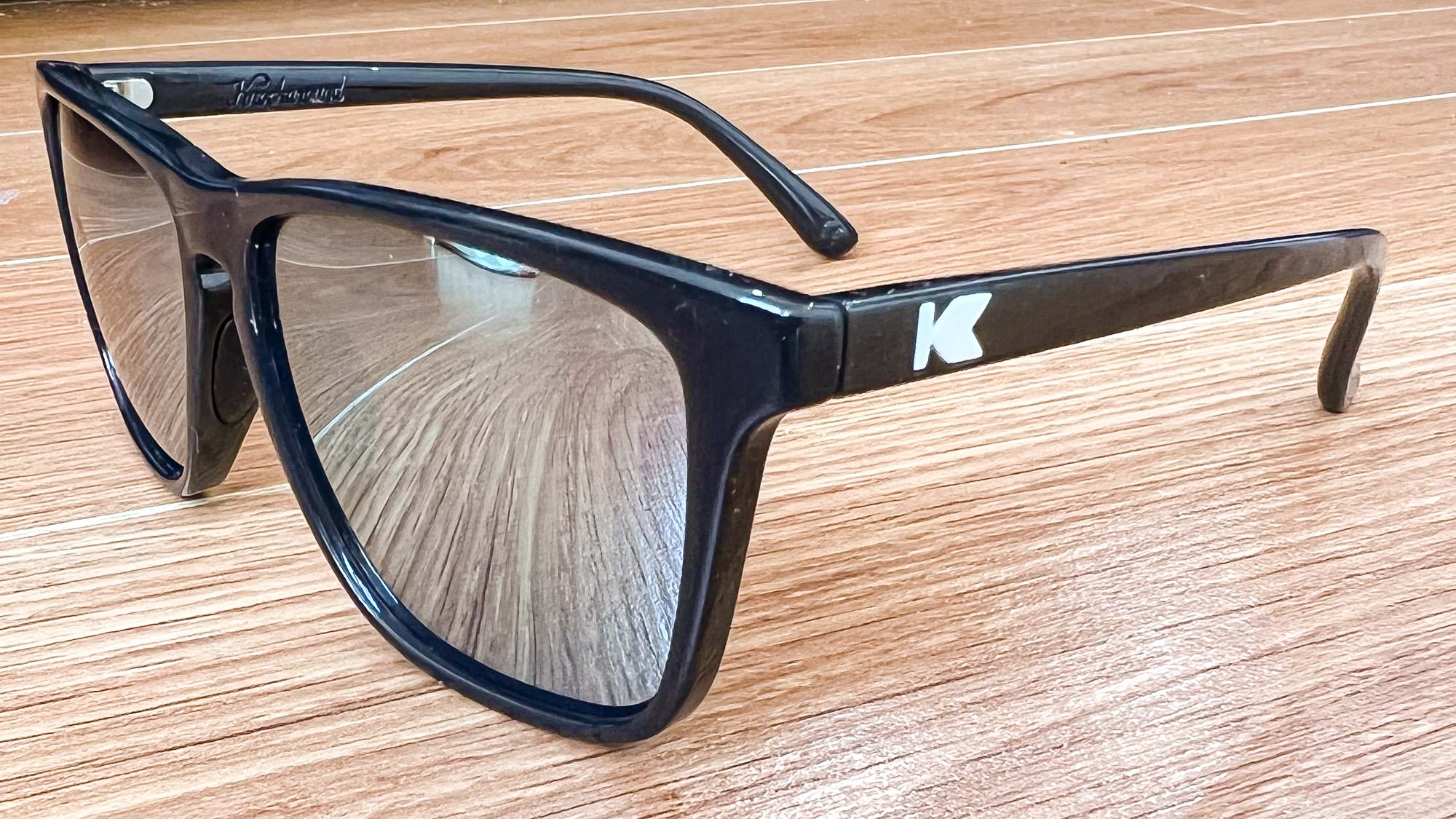
7. Knockaround Fast Lanes
Our expert review:
Specifications
Reasons to buy
Reasons to avoid
Unless you have the same fashion sense as a robot, most running sunglasses don’t transition from the roads to your next brunch very well. That’s not the case with the Knockaround Fast Lanes, which proved to be protective on an early morning 5k and stylish when I met up with friends in the afternoon.
Thanks to a square frame and lens, the Fast Lanes look similar to any number of sunglasses from high-end retailers. It’s a design that never really goes out of fashion, and that flatters most face sizes and shapes. Because of this simple yet classic look, the Fast Lanes make an appropriate accessory for both casual and formal settings.
Further adding to the Fast Lane’s versatility is Knockaround’s wide range of customization options. In fact, “wide range” may be putting it too lightly, there’s literally nothing about these glasses you can’t design to your liking, down to the color of Knockaround’s logo on the temple. Customization adds a little extra to the price, but compared to most of our other selections, they’re still incredibly affordable. If you’re not so creatively inclined, you can choose from one of 49 pre-designed frame and lens combinations.
Sure, the Fast Lanes look good, but we’re testing running sunglasses here, so I was eager to try them out on the pavement. I tested the “sport” model of Fast Lanes, which include rubber padding on the nose bridge. This padding was crucial in keeping the frames in place as I ran. If it wasn’t there, I have to imagine I’d experience a lot of bouncing and sliding. It’s important to keep this in mind, as not all Fast Lanes have a “sport” designation.
The Fast Lanes look like a close cousin to the Goodr OG’s, so I expected some significant sunlight leakage around the sides (it’s inevitable with a non-wrap around design). It definitely happened, but I wouldn’t categorize it as distracting, and it didn’t impede my running performance. Unlike the Goodr OGs, the Fast Lanes’ frames felt a bit cheap and flimsy. That being said, they held up very well on my runs and against the treacherous territory of my purse.
Best running sunglasses for small face shape
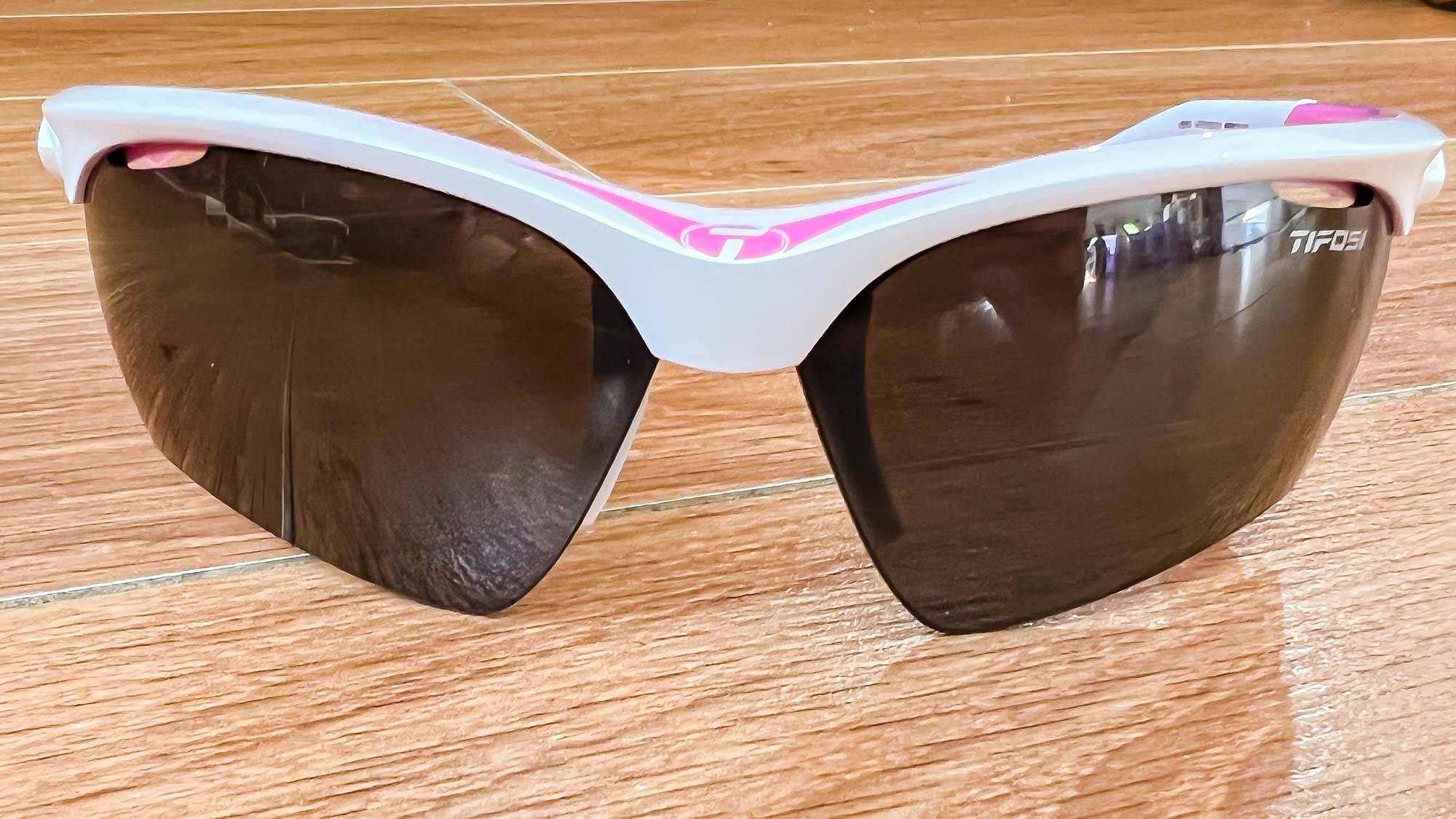
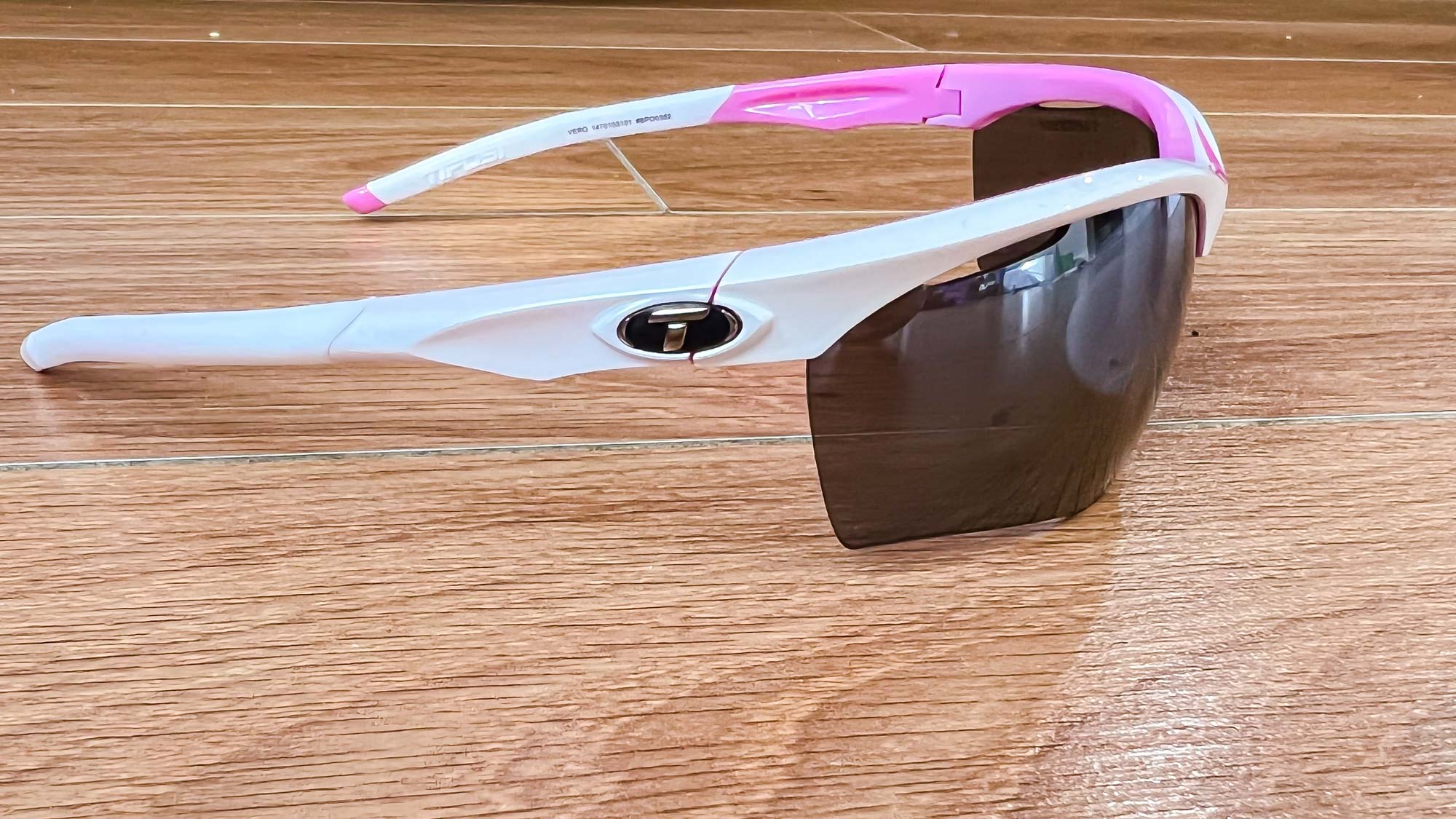
8. Tifosi Vero
Our expert review:
Specifications
Reasons to buy
Reasons to avoid
Built as a more compact version of the brand’s best-selling frames, the Tifosi Vero proves that good things can come in smaller packages. This is welcome news for petite runners, who may struggle to find sunglasses that both fit and flatter their faces.
Tifosi shortened the temple arms (from 130mm to 119mm), narrowed the lens width (from 72mm to 64mm), and shrunk the lens height (from 43mm to 39mm) of their Veloce model to create the Vero, without reducing quality or coverage. Interestingly, the distance between lenses is wider on the Vero (14mm) than it is on the Veloce (10mm). While that seemed a little counterintuitive to me, the measurement didn’t seem to affect performance drastically.
I don’t consider myself to have noticeably small features, but the Tifosi Vero fit my face and head like a glove. Of all the running sunglasses I tested, they felt the most secure and comfortable on all of my outdoor efforts. Hydrophilic rubber nose and ear pads held the Veros solidly in place once the sweat started pouring in, and venting between the lens and the frame kept my vision clear and free from fogging.
Included with the Vero are 3 interchangeable lenses — a traditional “smoke” or gray lens, an “all conditions red” lens, and a clear lens. Considering the Vero’s relatively mid-range pricing, and the fact that replacement lenses can sometimes run you up to $100, this is an incredible bargain (if you want those lenses to be polarized however, you’ll need to shell out an additional 35 bucks — almost half of the Vero’s cost). The Vero’s protective case even comes with separate compartments for each of the included lenses, which is an impressive indication of Tifosi’s attention to detail.
While Tifosi claims that the Vero’s nose and ear pieces are fully adjustable, I had some trouble manipulating them. And when I was able to adjust, the result always rendered a tighter fit. If you’ve got a larger-than-average head or face, you’d be far better off purchasing the Veloce.
Best running sunglasses for large face shape
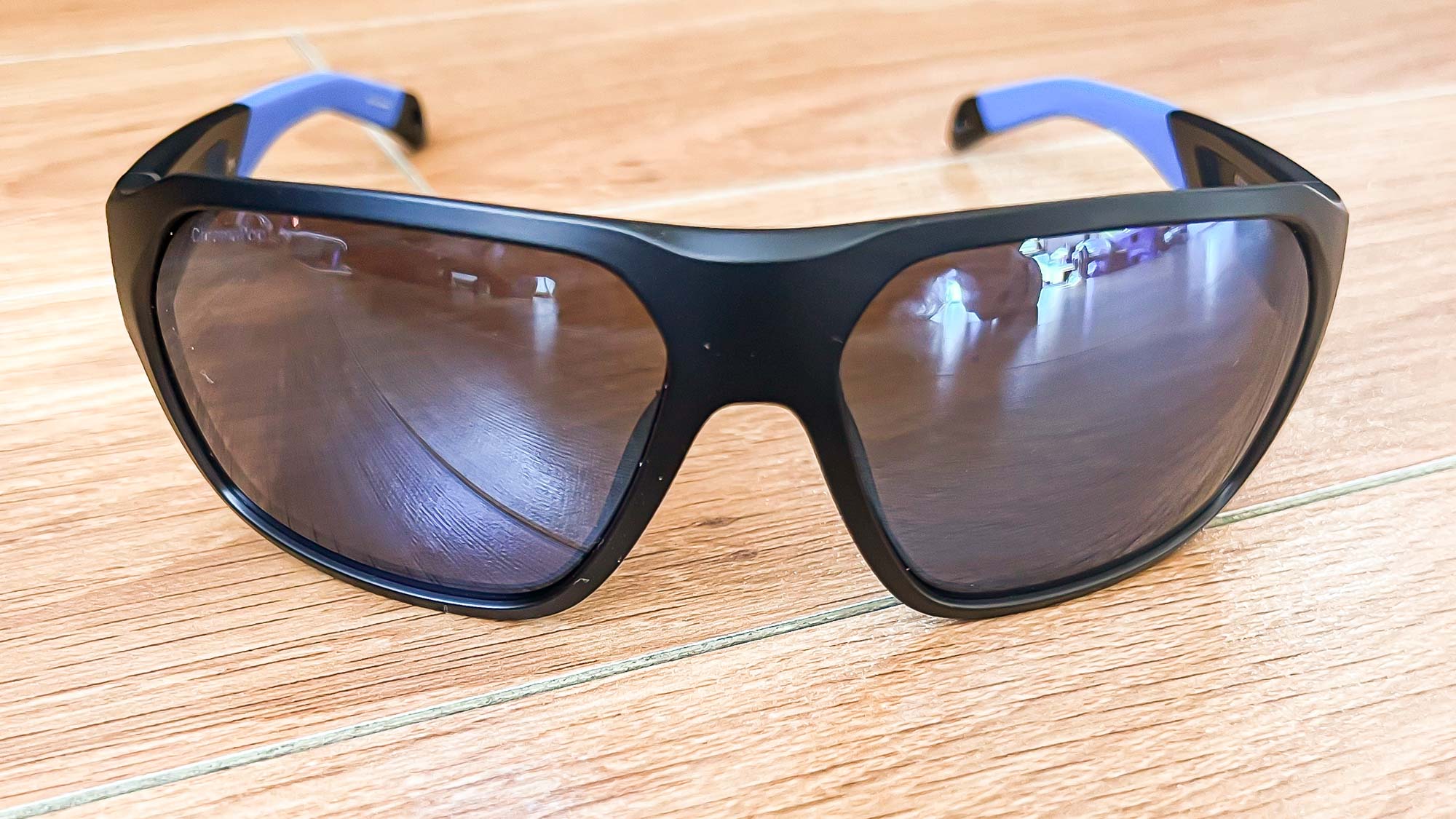
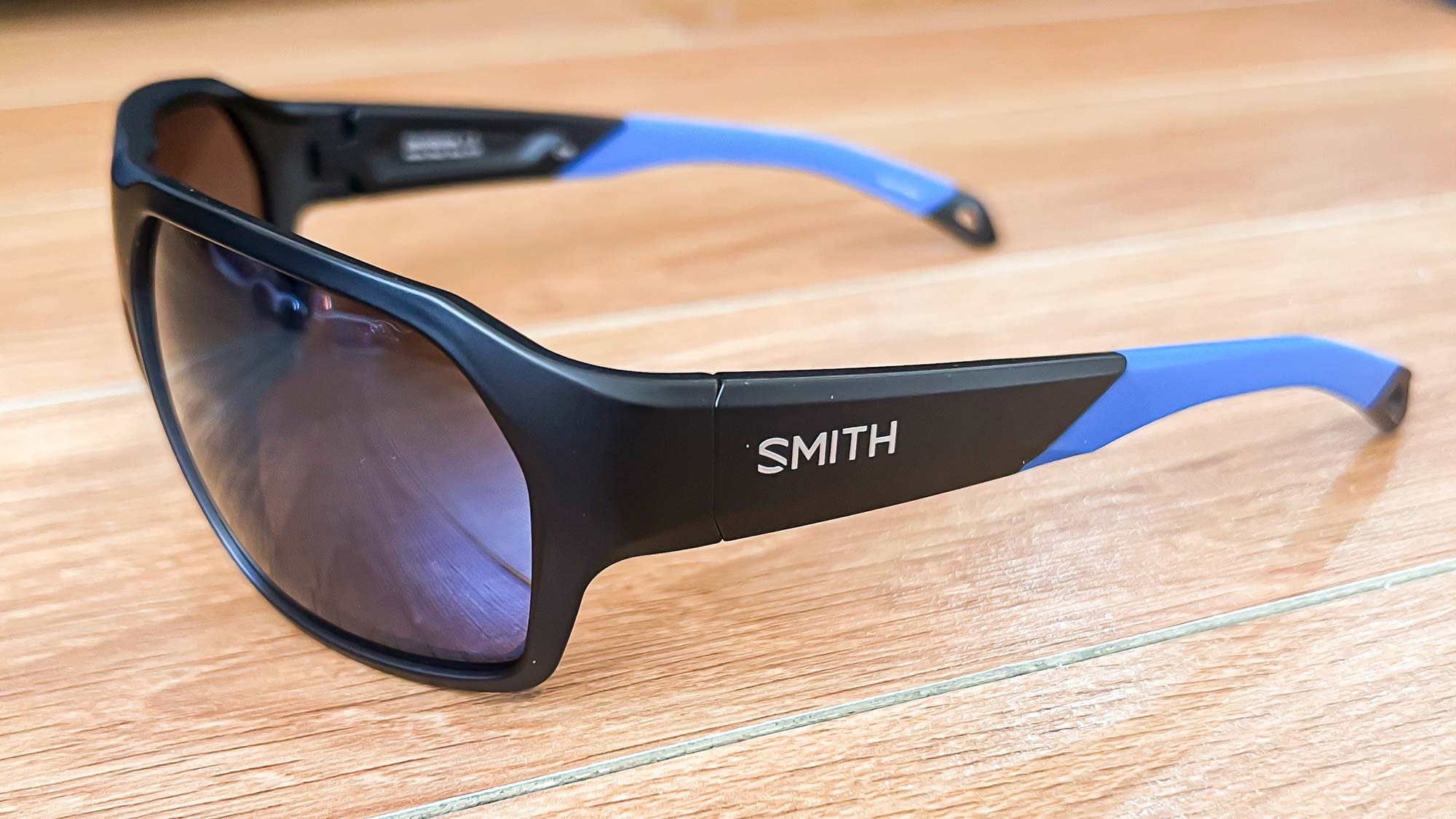
9. Smith Deckboss
Our expert review:
Specifications
Reasons to buy
Reasons to avoid
The name “Deckboss” is an appropriate moniker for these solid sunglasses from Smith, with large, thick frames, full wrap-around lenses, and rubberized temple tips, wearing them made me feel like the kind of boss you’d have to defeat at the end of a video game.
Because of an above-average lens height and an base-8 curvature, the Smith Deckboss provided the best coverage of any pair of running sunglasses on our list. Even with some gapping between my face and the frame, there was zero light leakage on any of my runs. If you run in super bright environments, the Smith Deckboss may just be your new best friend.
On the subject of lenses, Smith’s trademarked ChromaPop technology claims to filter the crossovers between red, green, and blue light — something the retina has trouble doing on its own. The result? Enhanced color definition, contrast, and clarity, which ultimately translates to a safer run (the more you can see in detail, the more you can avoid things like bumps or holes in the pavement). I tested the Deckboss with blue mirrored lenses, and while I did notice that colors appeared a little brighter than when testing other pairs on our list, the difference wasn’t staggering.
Ultimately though, the Deckboss is best suited for those with bigger heads and faces. They stayed on my average-sized face relatively well during testing, but started to slide down my nose every so often, and as I mentioned, there was some gapping in between my face and the frame. Neither of these aspects proved overly distracting, but I think if my face and head were bigger, these problems would have been non-existent.
The Deckbosses aren’t the lightest sunglasses on the market, at 1.2 ounces they tip the scales compared to most of our other selections. This shouldn’t necessarily be a deal breaker but it’s an aspect to consider, especially if you’re doing any distance training.
How to choose the best running sunglasses for you
When deciding on a pair of running sunglasses, you’ll want to consider a few factors: your face and head size, the kinds of conditions you’ll be running in the most, and your desired level of coverage.
While it’s likely that any pair of sunglasses you purchase will “fit,” not all frames are created equal. Temple arm length and flexibility, nose bridge width (sometimes referred to as DBL, or distance between lenses), and lens height can all vary greatly between models. Many brands will suggest their best options for different sizes of heads and faces, but it’s always a good idea to measure a pair of sunglasses that you currently own for comparison.
You’ll want to think about the weather and environments you run in as well. Lens colors can help with visibility in varying levels of light exposure : black or gray lenses are great for general usage or very sunny days, blue or purple tinted lenses can enhance colors while offering protection from reflective surfaces (like snow or water), and amber or brown lenses will reduce glare on overcast days and improve contrast between green landscapes and blue skies.
Polarized lenses will also drastically reduce glare, but they’re typically more expensive. If you run in areas without a lot of sunlight, it might be safe to skip them. You’ll also want to note a lens’ VLT, or Visible Light Transmission. Lenses with a lighter tint will have a higher VLT percentage, indicating that more light will travel through the lens into your eyes.
Coverage is another important factor. If you want lenses that curve and don’t let much light leak around the sides, you’ll want to pay attention to base curve measurements. The higher the base curve measurement, the more the lens wraps around your face. Generally, a base curve measurement of 8 or higher will provide full wrap-around coverage.
Finally, remember that you’ll be running in these sunglasses, so features like rubberized nose pads and temple arms may help to reduce bouncing and slipping while keeping the frames comfortable and secure.
How we test the best running sunglasses
Here on the Tom's Guide fitness desk, we've been testing the best running gear on the market for years, so we know what we're looking. We tested each pair of running sunglasses on short to mid-distance outdoor runs, in varying weather, temperature, and light conditions.
All sunglasses on this test were tested on road runs, except the Oakley Flak 2.0 XL, which was tested on short-distance trail runs.
All sunglasses were evaluated for several factors, including performance, comfort, and coverage during use, durability, and versatility for non-running-related usage.
Best running sunglasses: FAQs
Can you run wearing normal sunglasses?
In short, yes, you can. But will this be the most practical option? No.
Most casual everyday sunglasses aren't designed with the stability, lightweight materials, and anti-slip features needed for running. They may fog up, slide down your nose, or feel uncomfortable during long or more intense runs.
Investing in a pair of running specific sunglasses ensures better comfort, durability, and protection against UV rays, and allows you to focus on your performance.
Will running sunglasses make you faster?
Someone did ask me this sarcastically at run club last time I wore a pair on a very overcast summer's day, and I don’t blame him. The simple answer is no. Wearing sunglasses won’t suddenly transform you into a speed demon (though I wish it were that easy).
However, they can help in more subtle ways. They prevent squinting, which is something that creates tension in your face that travels down to your neck and shoulders and can mess with your posture. A more relaxed face means a more relaxed running form, which can improve efficiency and help you stay focused on your pace.
Running sunglasses also reduce glare and block out environmental distractions like wind, dust, and flying insects, which allows you to focus better on the path ahead. When you lower these distractions, you’ll likely maintain a smoother and more comfortable stride, which could indirectly contribute to better performance.
What color lenses are best for running sunglasses?
This is often down to personal preference, but red, rose or green lenses are said to block out more blue light, meaning your eyes will be under less strain on brighter days. Blue and purple lenses are best for misty or foggy days. Yellow or gold sunglasses, on the other hand, are best for running in low light.
What are the best running sunglasses for trail running?
If you're hitting the trails, it's best to opt for a lens with an amber tint, as these will help the environment seem brighter.
Sign up to get the BEST of Tom's Guide direct to your inbox.
Get instant access to breaking news, the hottest reviews, great deals and helpful tips.
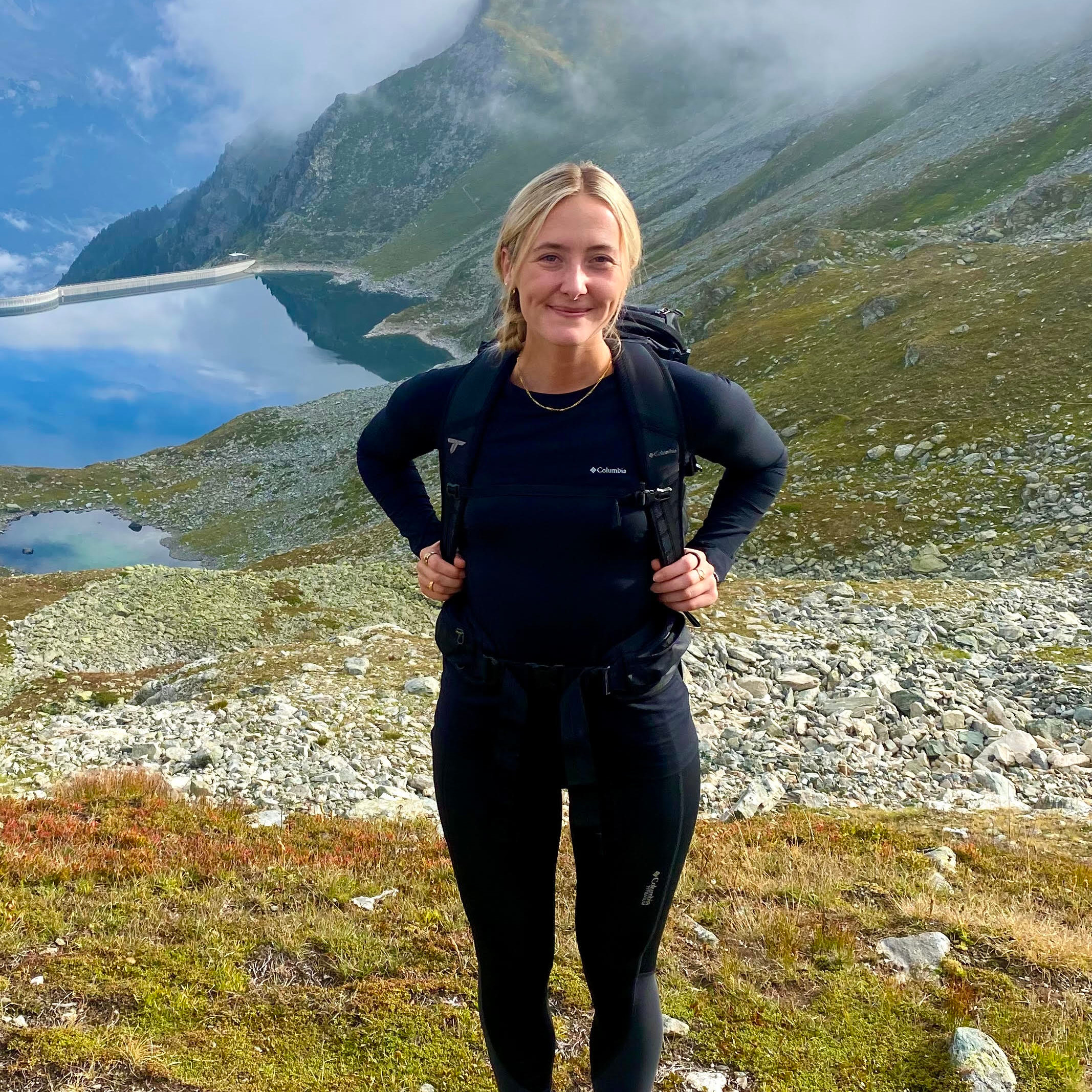
Jessica has been a fitness writer at Tom’s Guide since 2023, bringing three years of experience writing about health, fitness, and the great outdoors. Her passion for exercise began during her childhood, where she spent weekends hiking and competing in local athletics club events. After earning a master’s degree in journalism from Cardiff University, Jessica found the perfect way to combine her love of storytelling and fitness into a career.
Jessica is passionate about testing fitness gear and tech, using her reviews to help readers make informed buying decisions. She ran her first marathon in April 2024, finishing it in 3 hours and 48 minutes. Through her training, she’s developed a deep understanding of what it takes to grow as a runner, from effective workouts and recovery techniques to selecting the right gear for every challenge.
When she’s not at her desk, Jessica enjoys spending time in the kitchen crafting new recipes, braving cold water swims and hiking.
